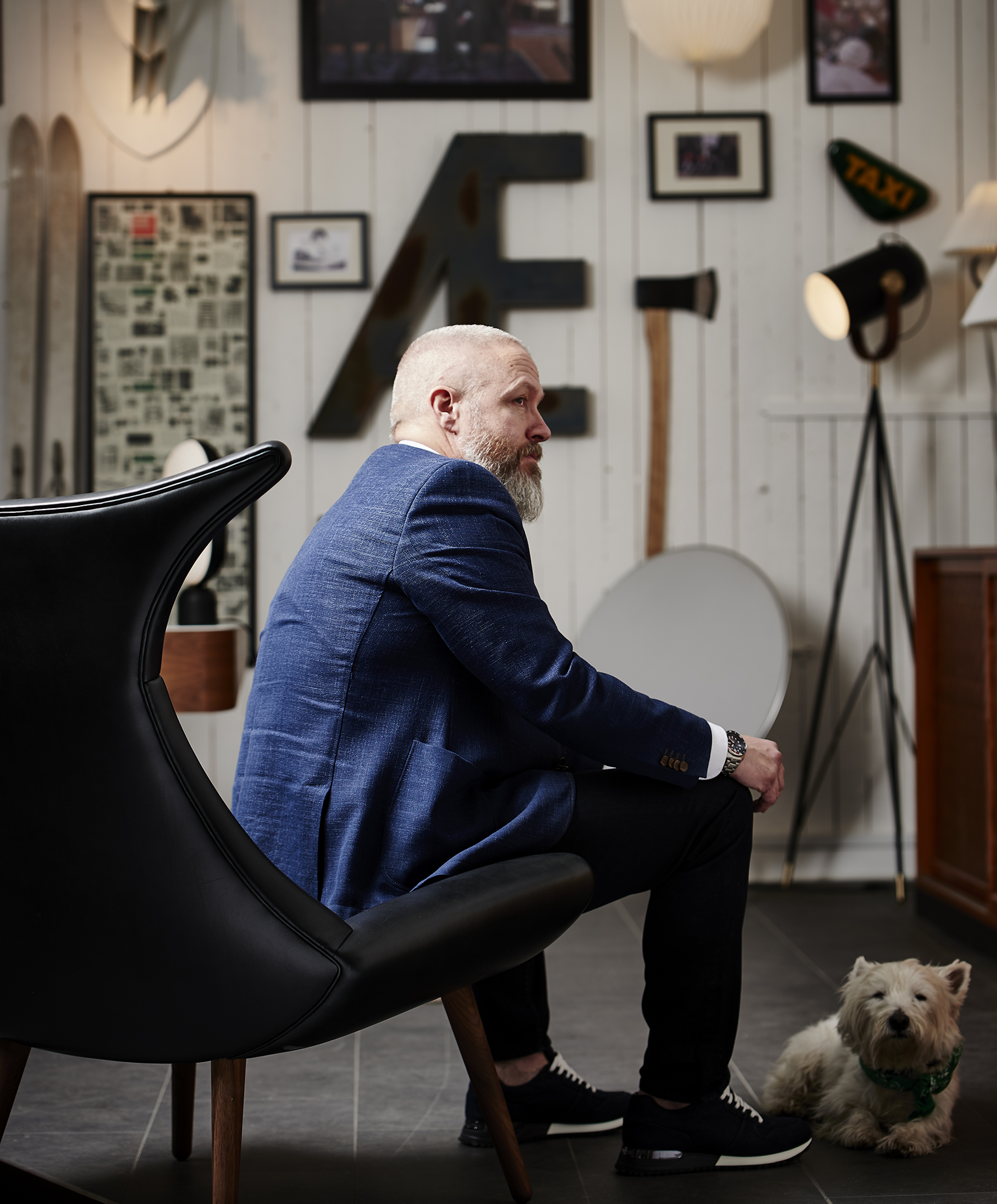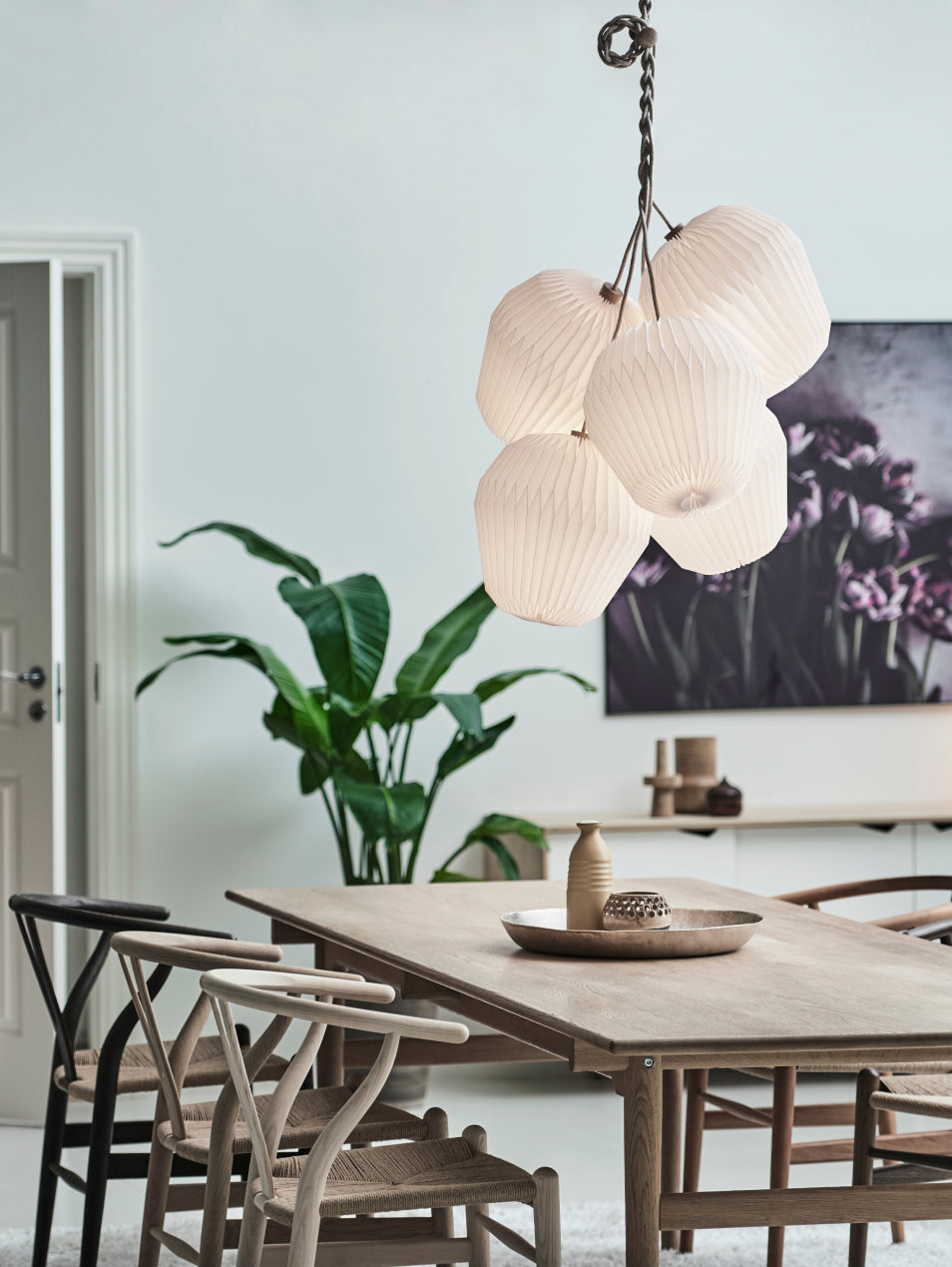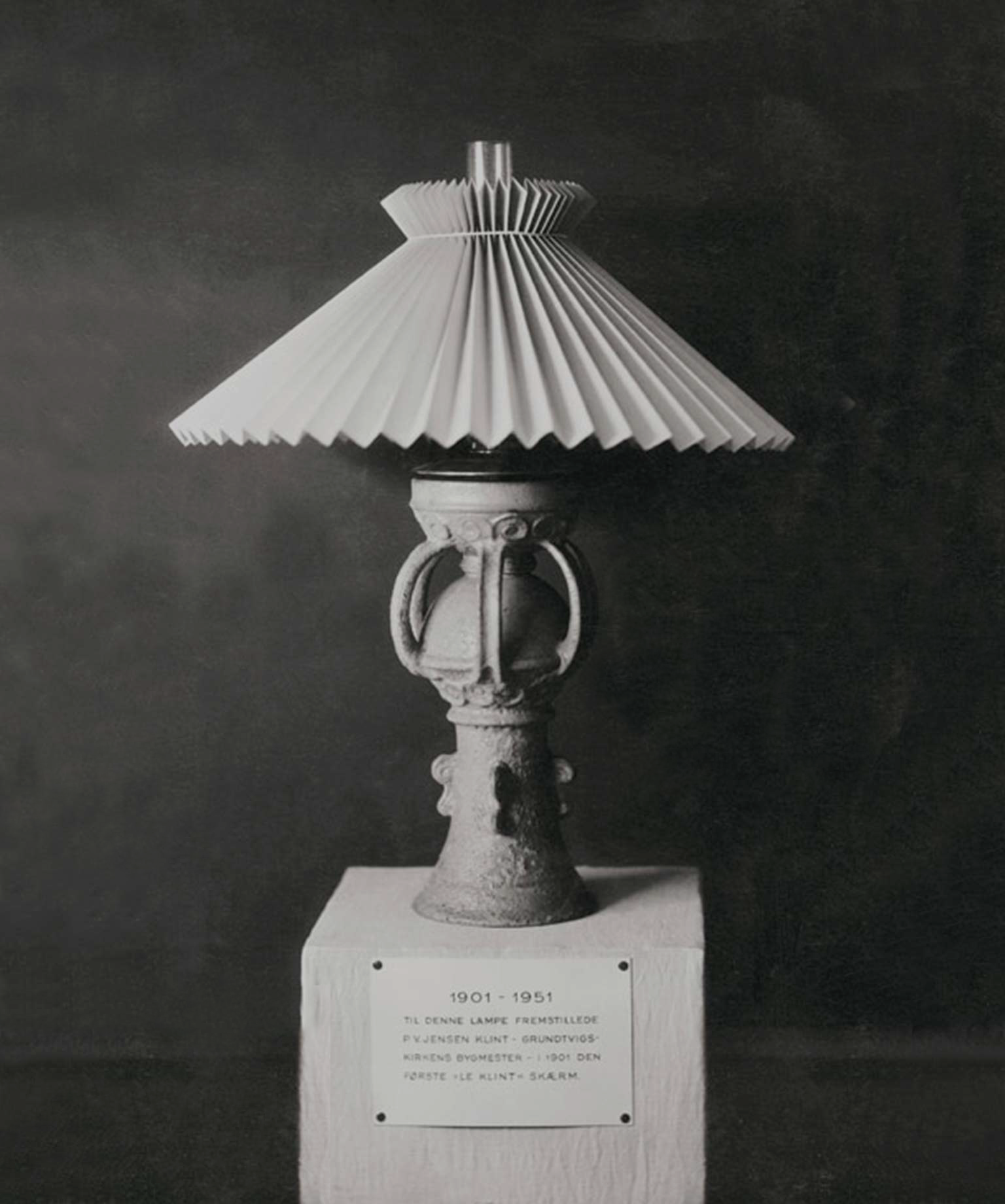1900s
The beginning
The need for light in Danish homes
A versatile man
Although we know Peder Vilhelm Jensen-Klint as the inventor of the first Le Klint lamp, he actually initially made his name as an architect. His masterpiece as an architect is the impressive Grundtvig's Church in Copenhagen. The construction began in 1921 however the church was completed in 1940 under the direction of P.V. Jensen-Klint's son, Kaare Klint, who took over the task following his father's death in 1930. The modern geometric shapes, the clean lines and the classic gothic architecture of the Grundtvig´s Church are spectacular
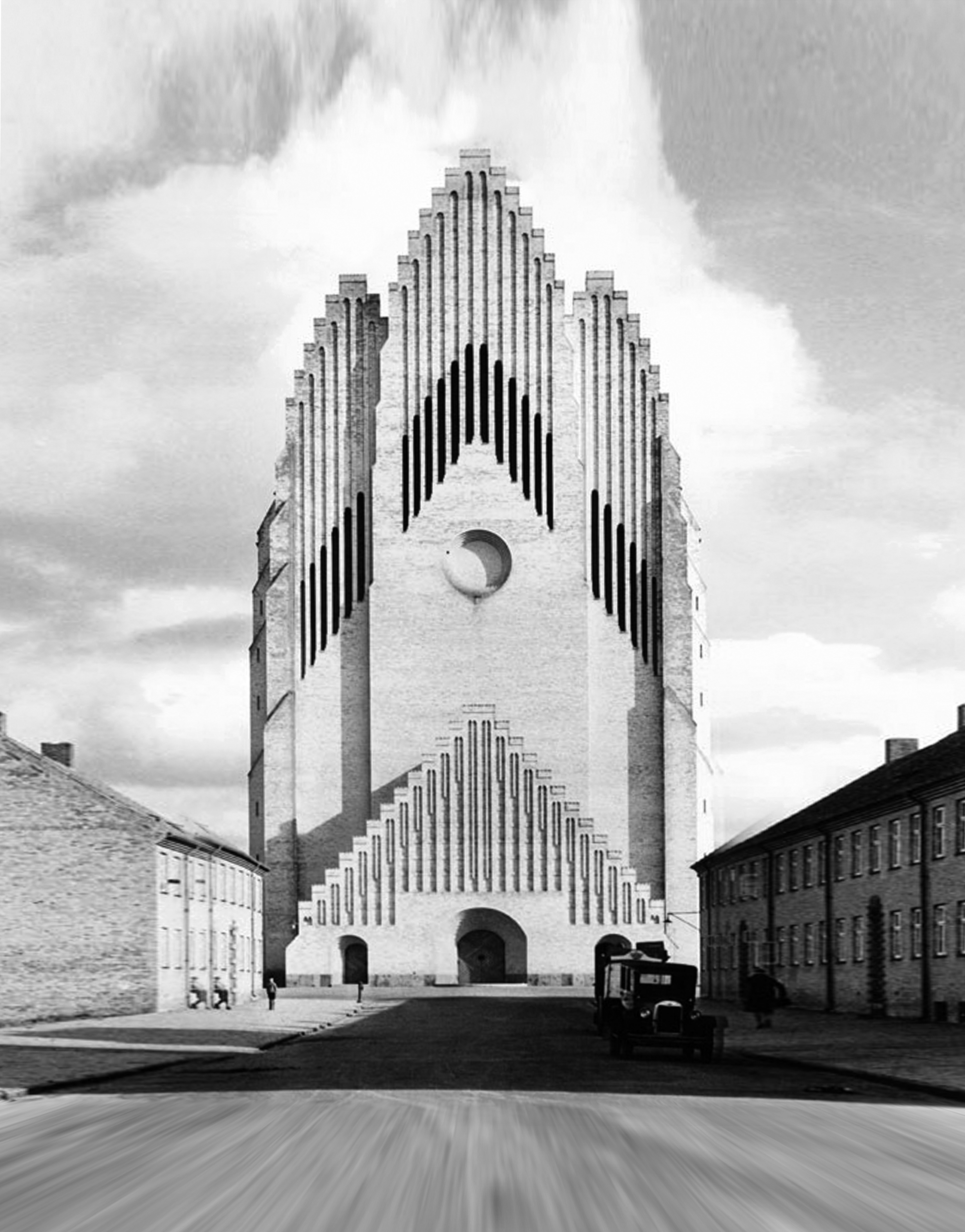
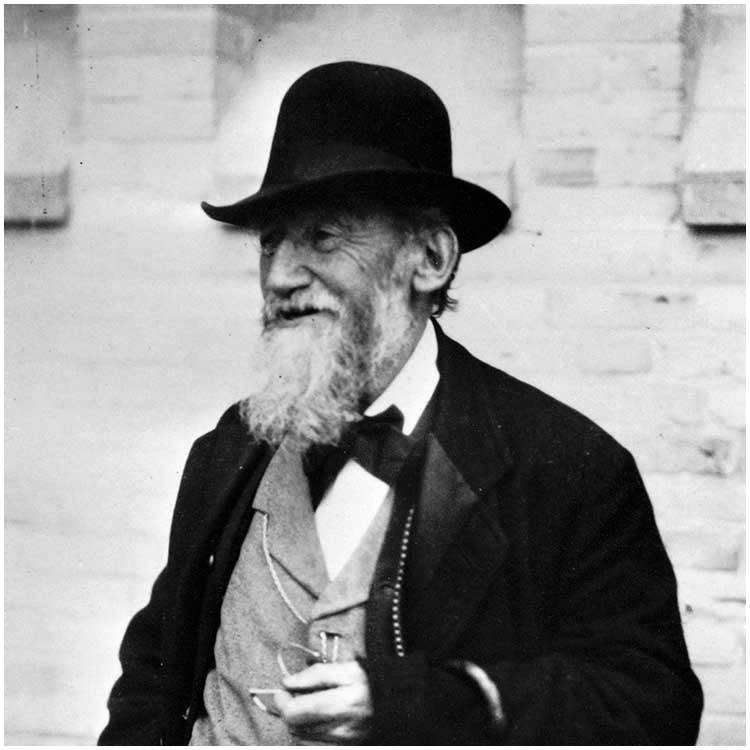
The Klint family
Folding paper into lampshades through cross-pleating, as P.V. Jensen-Klint had come up with, became a Klint family hobby at the start of the 1900s. The entire family, including sons Tage and Kaare Klint, tinkered with refining the pleated lampshade over the course of several years. There was an artistic creativity and an inventive spirit to the family, which shaped the bedrock of what later became a lighting company into which several generations would subsequently contribute.
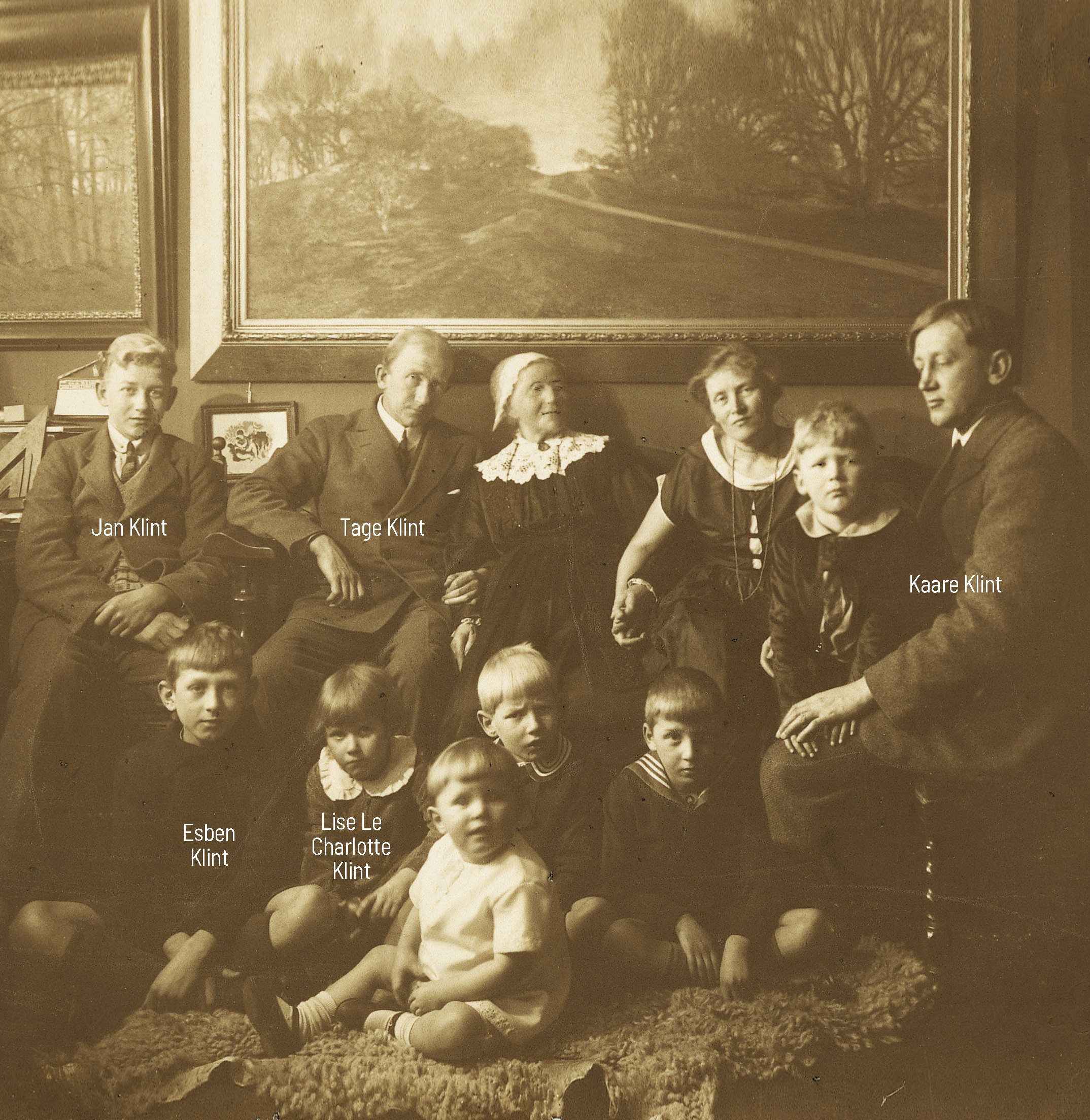
The Klint family gatheredat the home of Mathilde and P.V. Jensen-Klint around the year 1926. Top centreis the mother Mathilde with her son Tage and on the left her grandchild Jan. On the far right hand side is Kaare. On the floor to the left is Kaare's son, Esben, and next to him is Tage's daughter, Lise Le Charlotte. P.V. Jensen-Klint himself presumably the one taking the picture.
1940s
A world of light
From family hobby to business
A creative entrepreneur
Tage Klint, the son of P.V. Jensen-Klint was an industrious man and a born entrepreneur. Before founding the Le Klint company, he was the director of De Forenede Automobilfabrikker A/S (lit. "United Automobile Factories"), which built vehicles sold under the name Triangel. Tage Klint furthermore founded the companies Lactosan and Sanovo.
Le Klint was founded by Tage Klint in 1943.
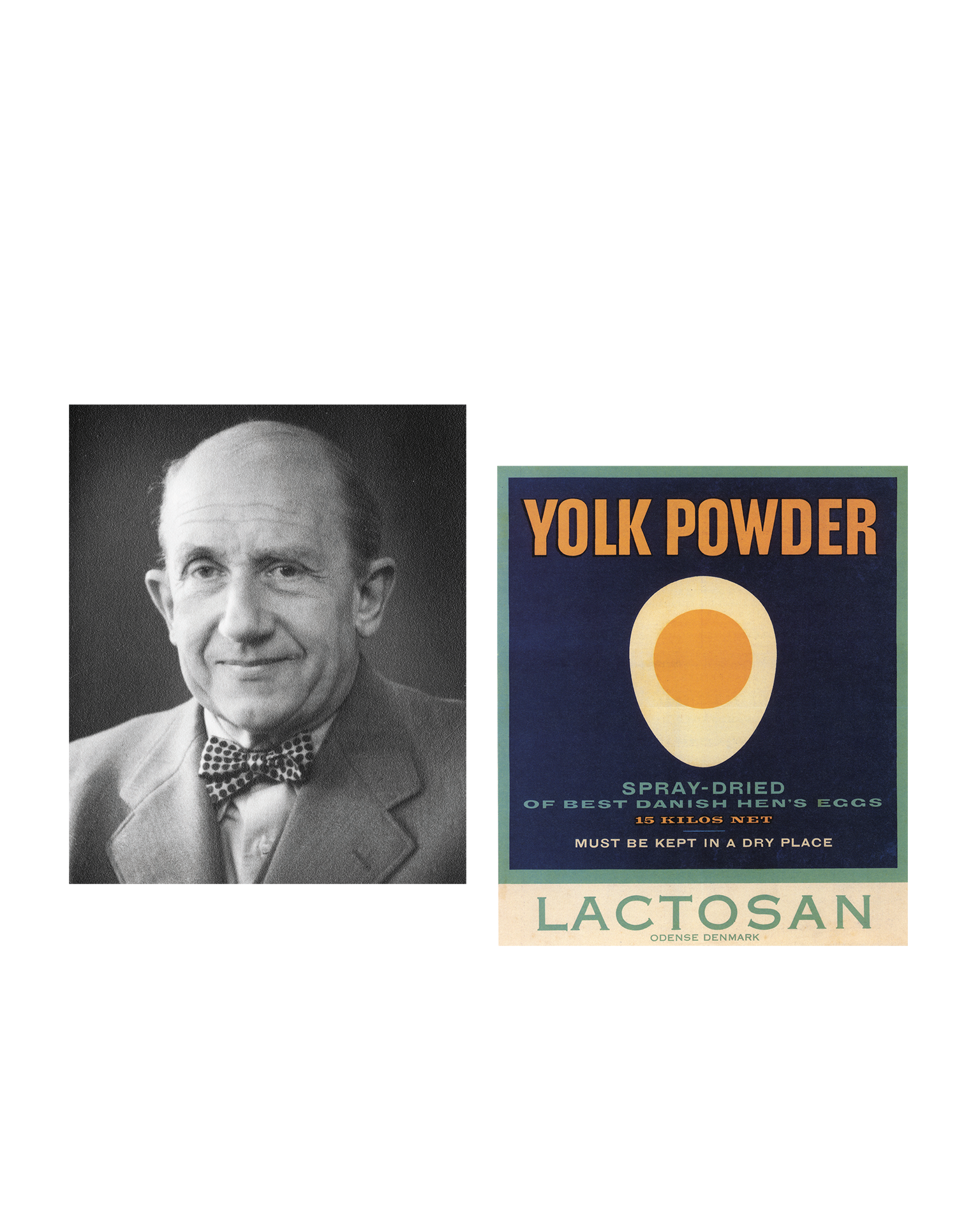
The unique detail
The first lampshade in the history of Le Klint is the Model 1. This lampshade is directly based on the initial lampshades folded by P.V. Jensen-Klint in 1901. But it was Tage Klint that added a vital element to the shade, namely a unique “grip-collar” that made use of the elasticity of the shade to attach it on to a frame. The principles behind this construction were patented as early as 1938 - and in fact, the Nr. 1 shade is still made in the exact same way today.
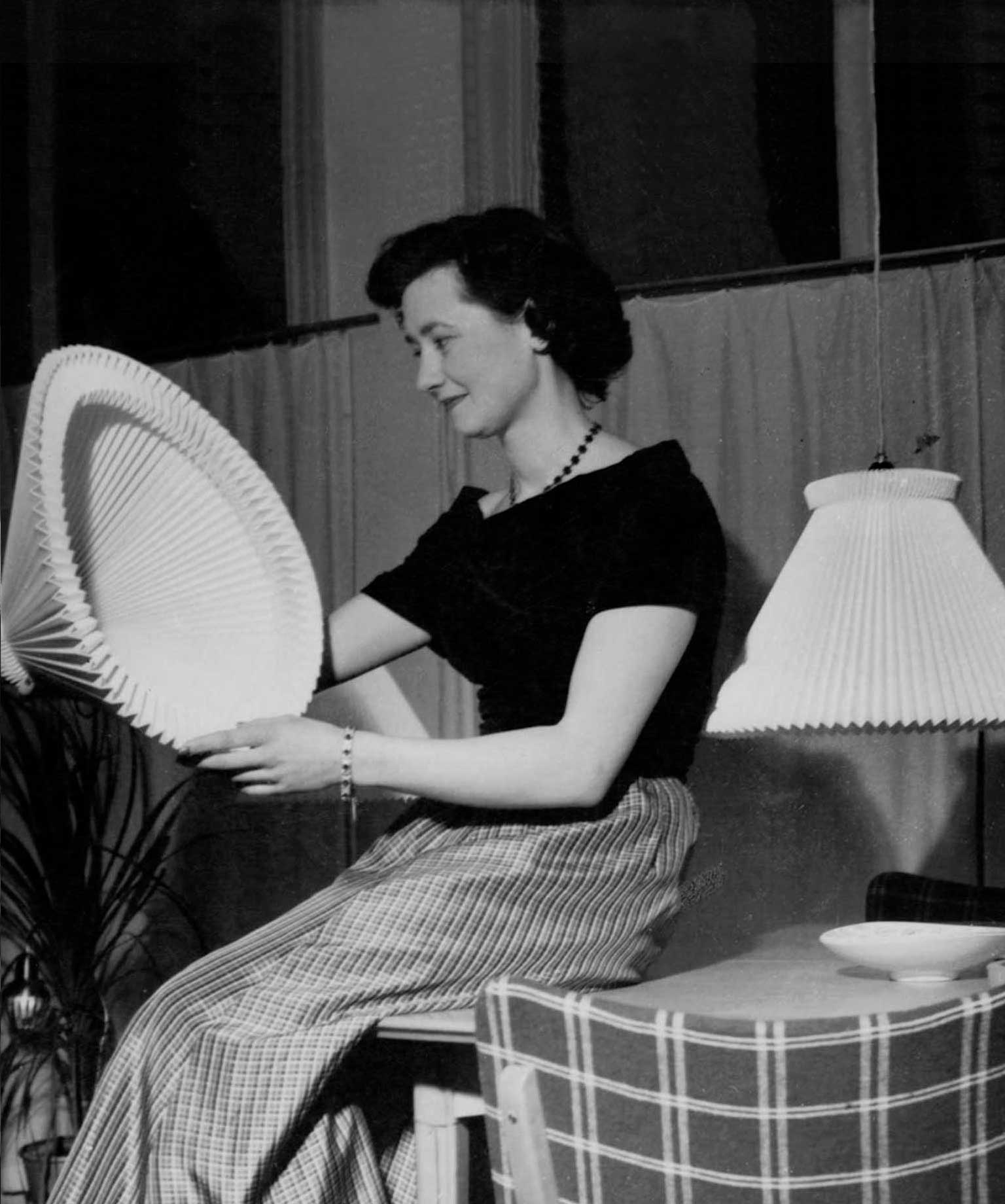
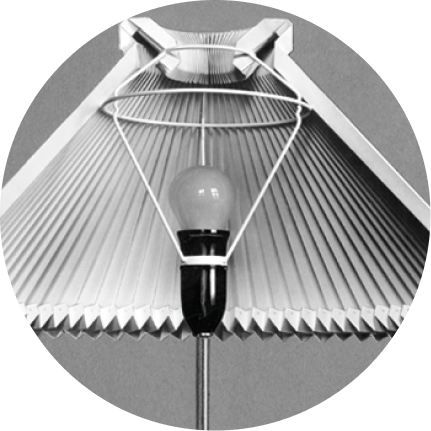
An established architect
From the start, the Le Klint company benefited greatly from P.V. Jensen-Klint's second son, Kaare Klint, who became a professor at the School of Furniture Design at the Academy of Fine Arts. But Kaare Klint was best known as an architect and the father of "Danish Modern", quite possibly the most popular era in Danish design. Kaare Klint introduced the concept of human anatomy to design, and he also designed several of Le Klints iconic lamps over the years.
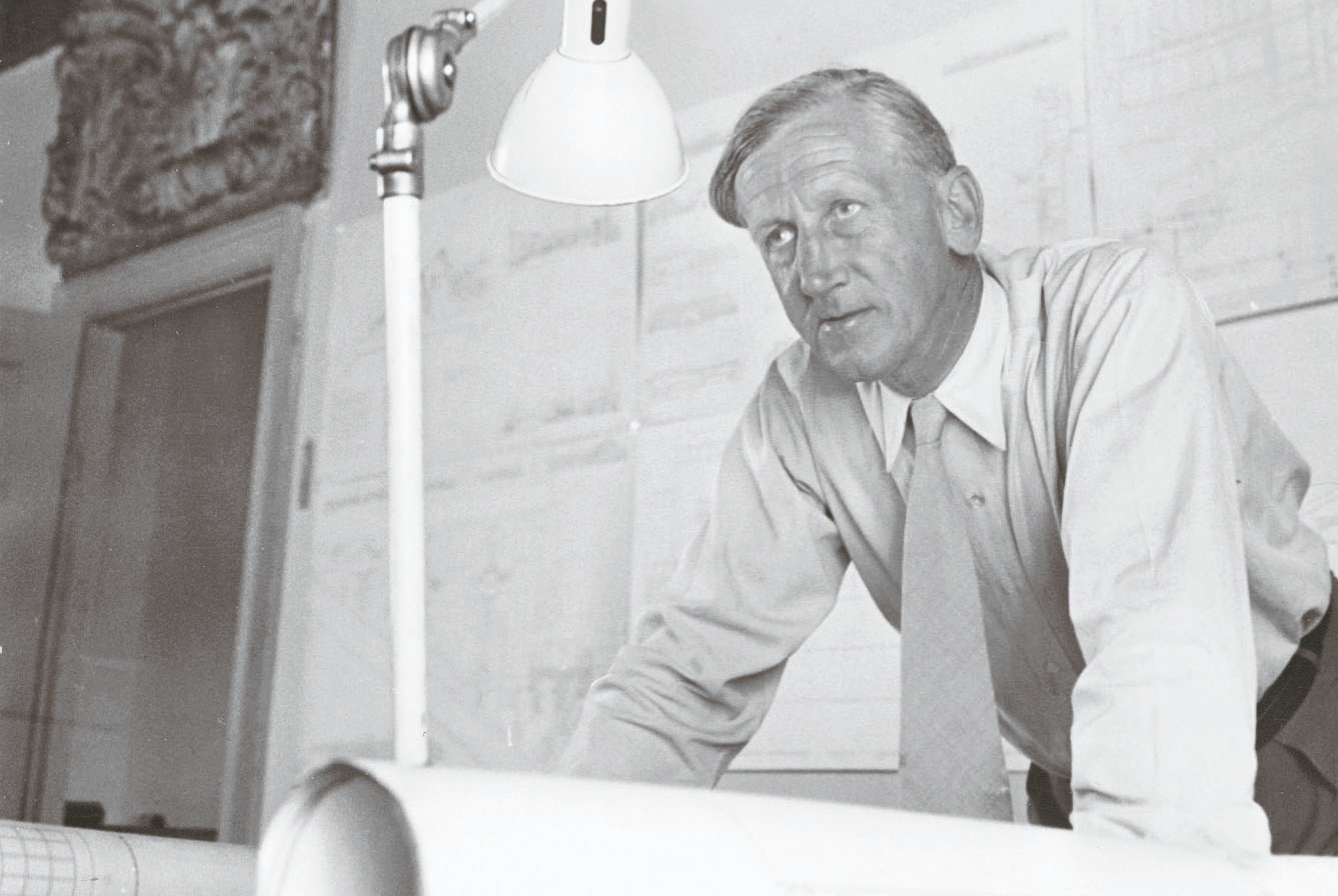
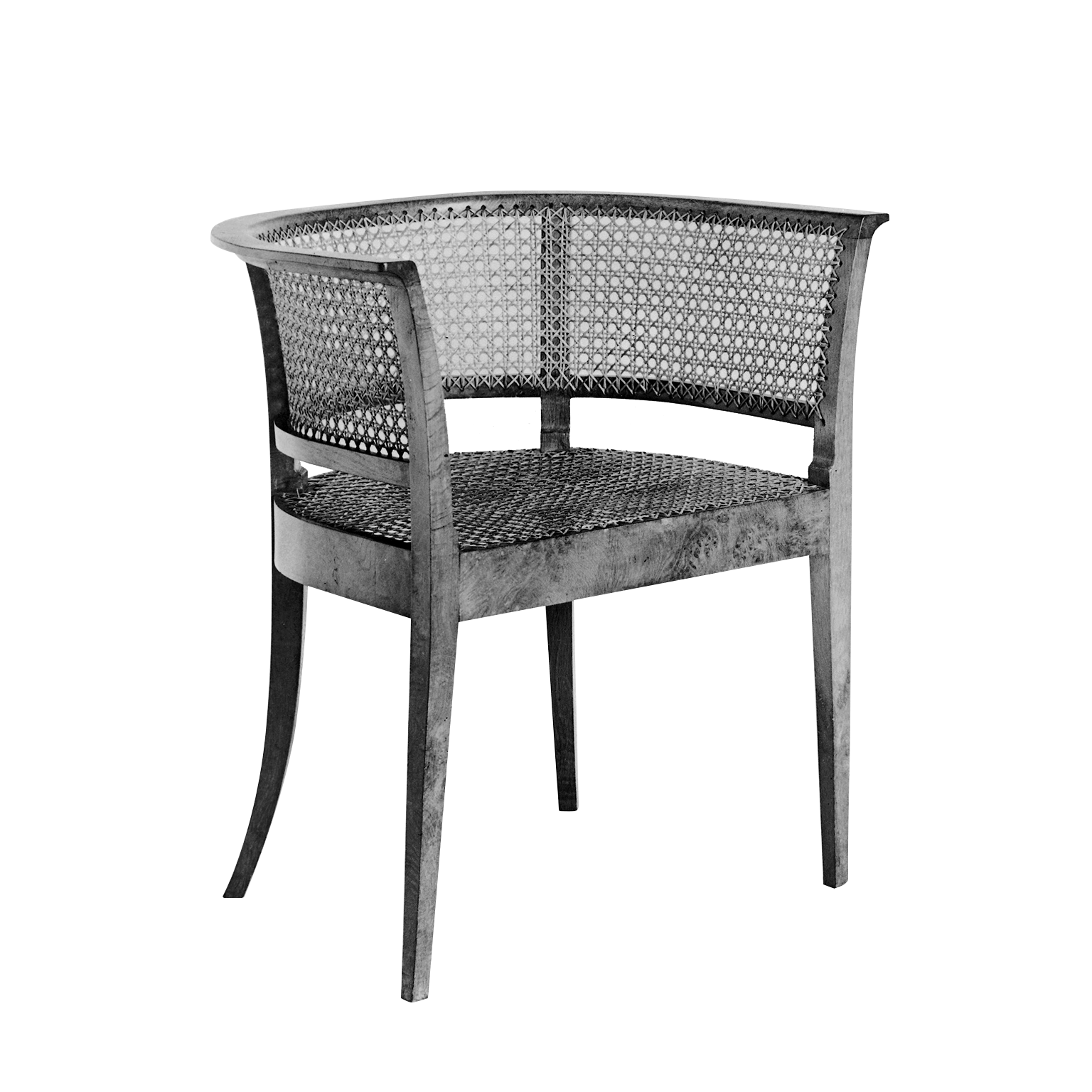
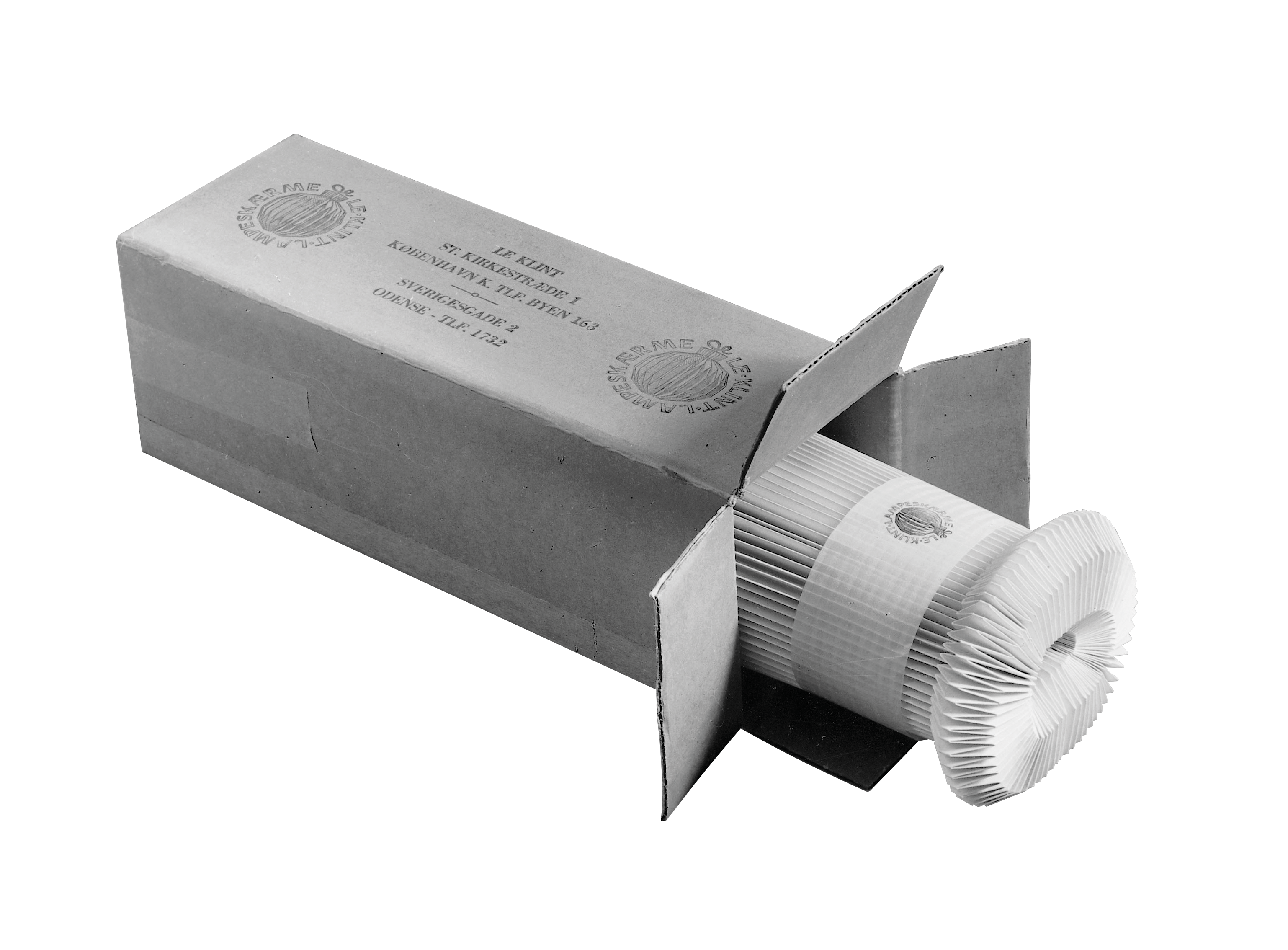
The Lantern
During the 1930s, Kaare Klint worked on drawing up a completely round closed pendant with folds. This became the Model 101, also known as The Lantern, which was launched in 1944. At that time it was fascinating that a rectangular piece of paper could be folded into a three dimensional ball with such a complicated structure. Kaare Klint also designed the company logo as well as the packaging, evidence that he was conscious of the customer's overall experience.
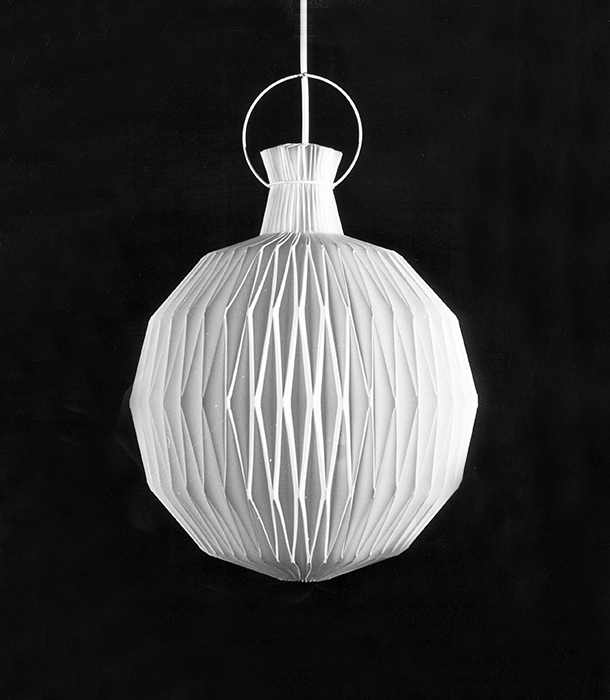
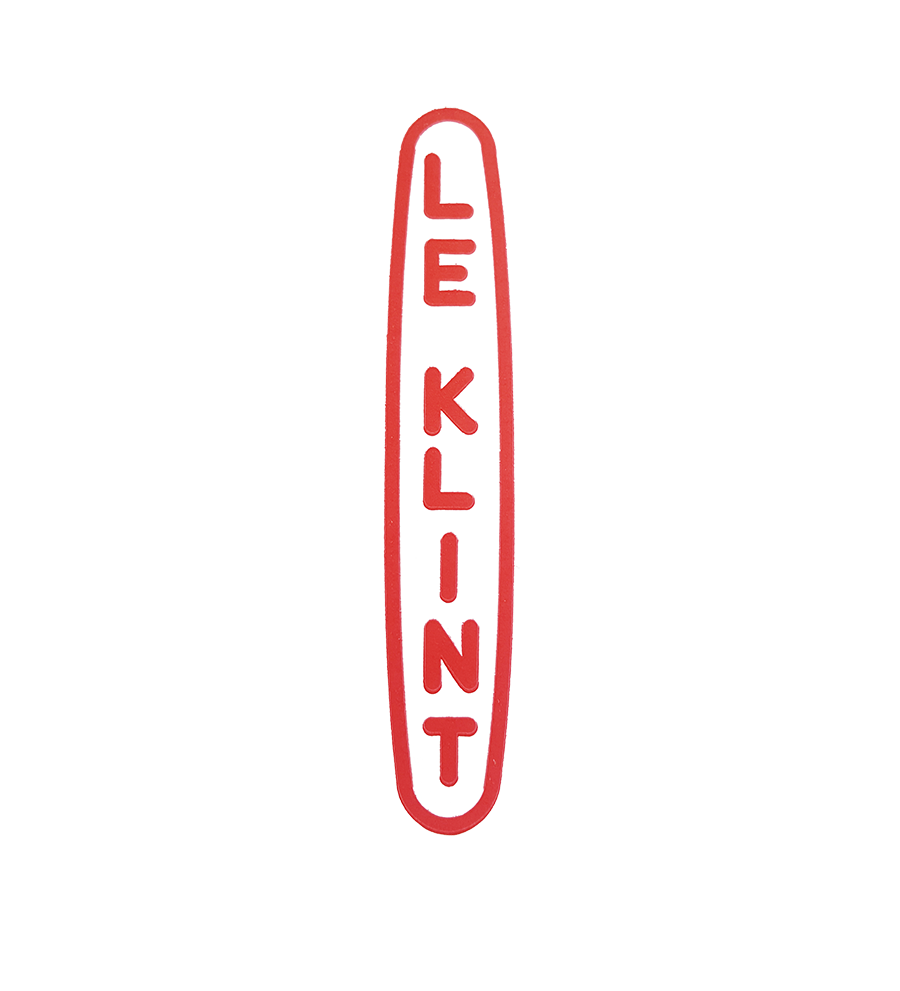
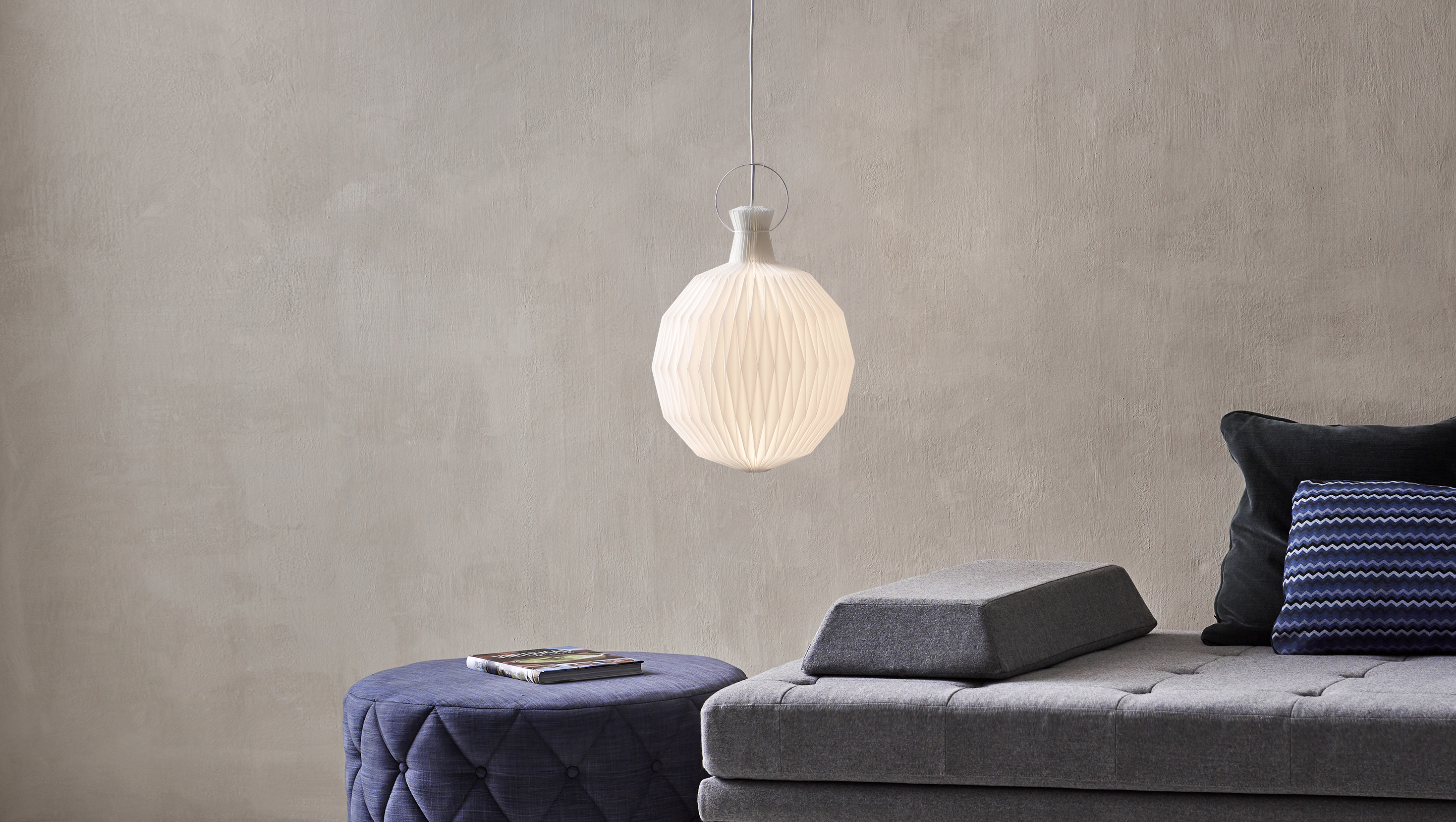
An iconic lamp
In the same year that the company was founded, the shop opened in Store Kirkestræde 1 in Copenhagen. The shop was decked out with Kaare Klint's shop furnishings in Oregon pine, the walls were papered with Gunnar Biilmann Petersen's floral "Rose wallpaper" with shades of blue, and the architect Mogens Koch, who also designed the Model 105, set up the lamps.
The shop opens
In the same year that the company was founded, the shop opened in Store Kirkestræde 1 in Copenhagen. The shop was decorated with Kaare Klints shop furnishings in Oregon pine, the walls were papered with Gunnar Biilmann Petersen's floral "Rose wallpaper" with shades of blue, and the architect Mogens Koch, who also designed the Model 105, set up the lamps.
The shops daily manager was Lise Le Charlotte Klint, Tage Klint's daughter.
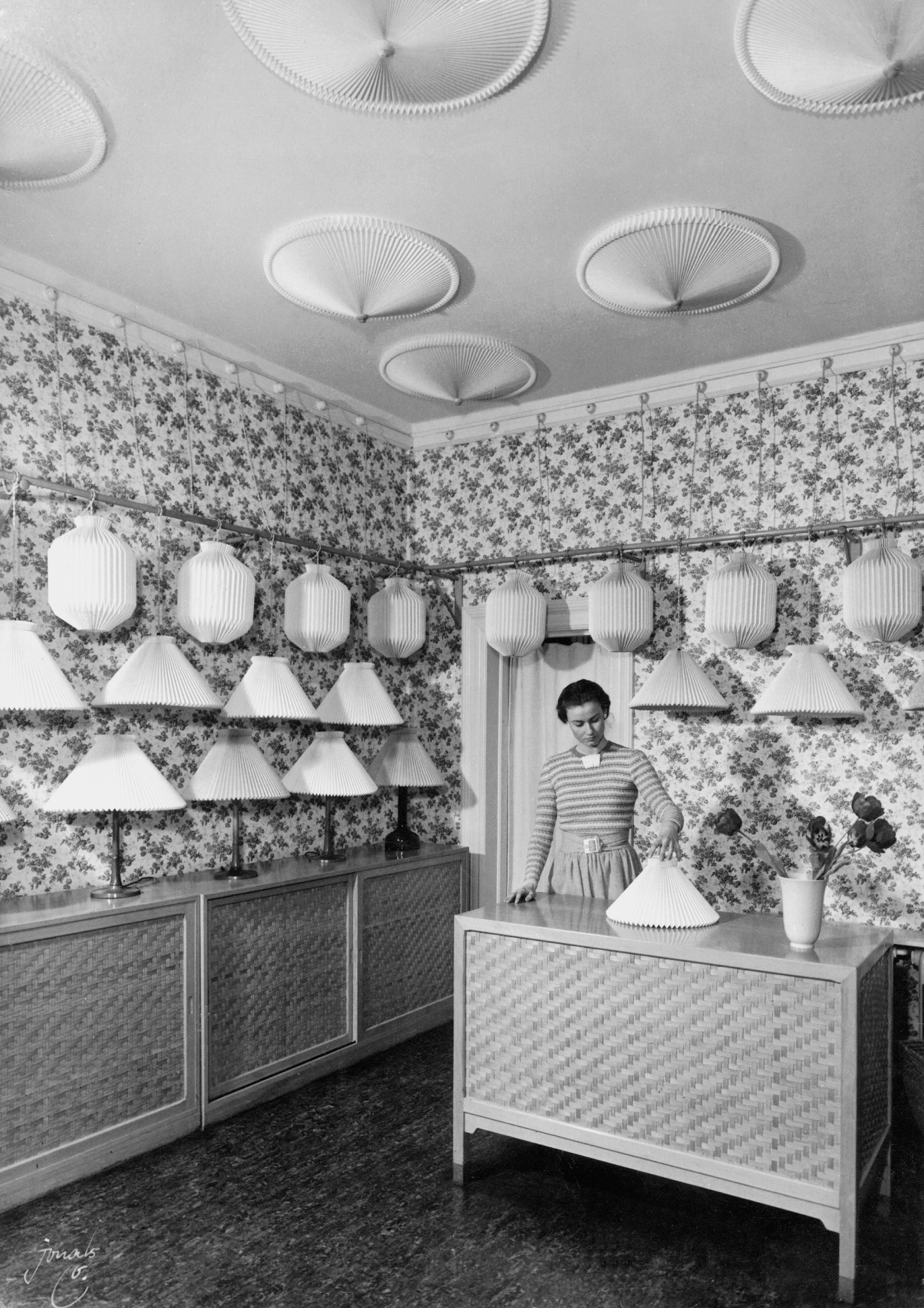
This picture is from 1943, at which time Lise Le Charlotte Klint was 23 years old.
1950s
The next generation
Jan Klint returns home
A visionary man
In 1951, director Tage Klint became seriously ill, and his son, Jan Klint, who lived in the USA, was summoned home. Two years later, Tage Klint died, and Jan Klint assumed the position of director of Le Klint. As a businessman, Jan was light years ahead of his time and had an
international perspective. Jan Klint had a slightly unusual background for a director of a lamp company. He trained as a mechanic in Denmark and as an aeronautical engineer in the USA.
During the 1950s, the company was streamlined, production began on new models, and export markets were cultivated.
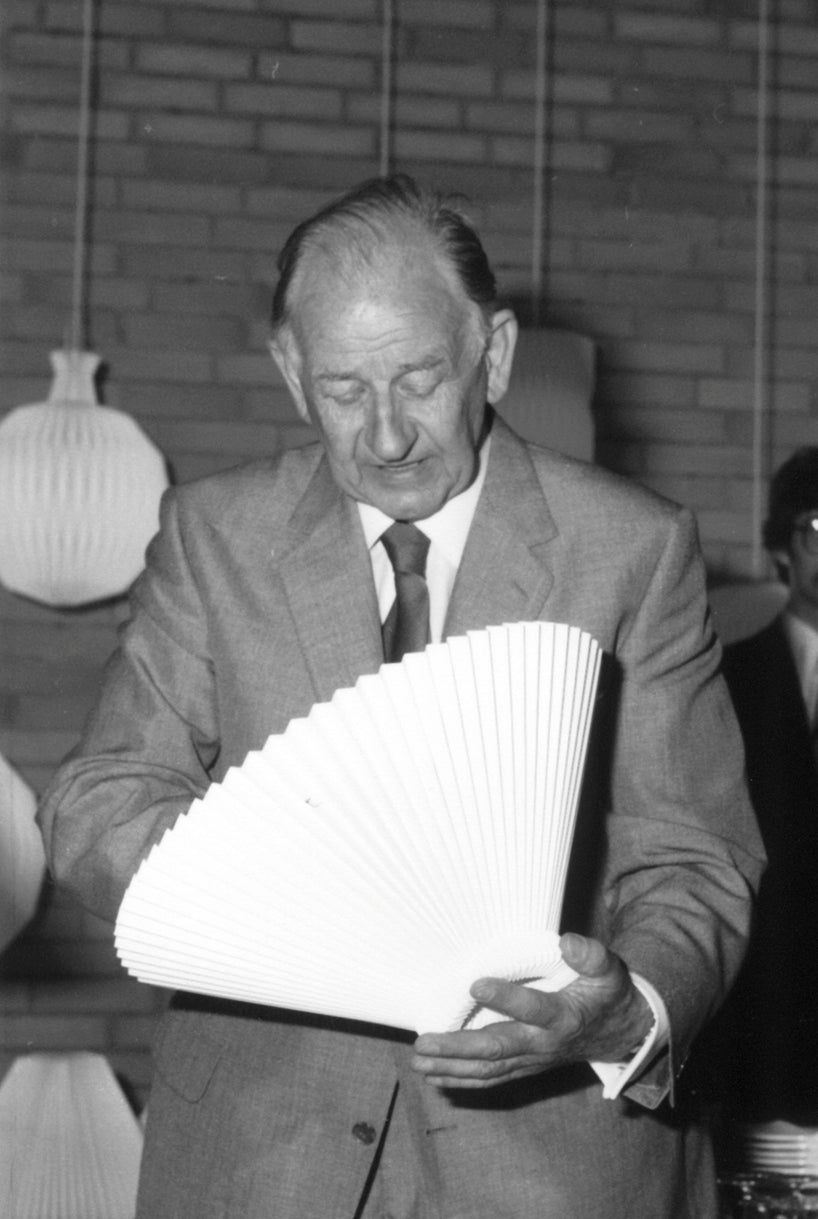
The Sax lamp
Industrial engineer Erik Hansen, couldn't find a suitable reading lamp for his bedroom, so instead he decided to make his own design. The result was a wall lamp that could be extended and retracted. Once the wall lamp was completed, Erik Hansen's wife, Ruth Hansen, visited the Le Klint shop in Copenhagen, as she wanted to buy a suitable shade for the lamp. The shop staff – as well as the sales director, Allan Bock, who happened to be visiting the shop that day – were so impressed by the lamp that it was put into production in 1952. The Sax Lamp is still one of Le Klints most popular lamps.
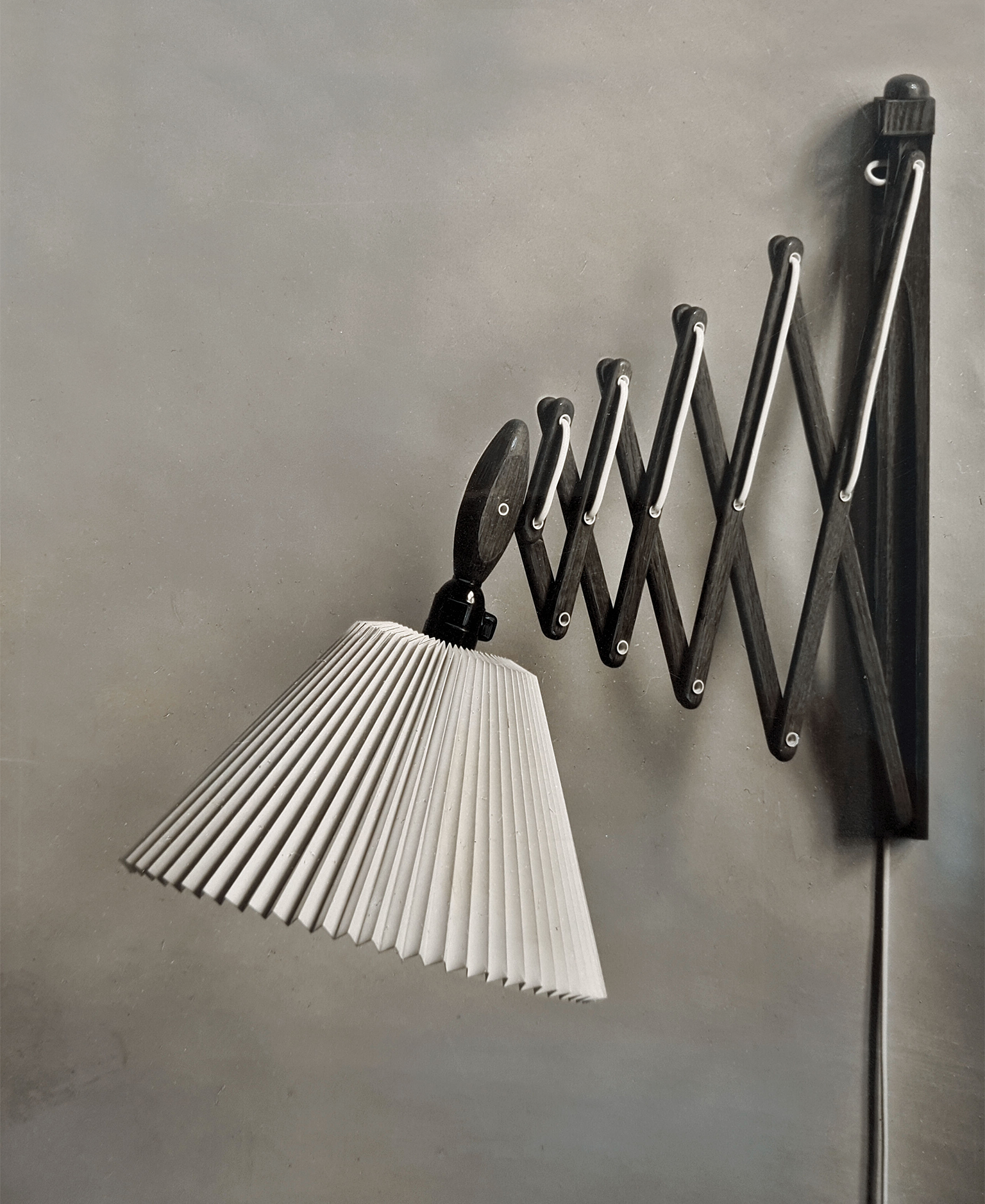
1960s
A new era
The new Le Klint takes shape
Product development
With Jan Klint in charge, the 1960s opened a new age for Le Klint. The business was moved from rented premises in Odense harbour to its own production facilities and administration at Egestubben in Odense Nord. Le Klints HQ and production is still today located here. But there were also several new measures implemented in the area of product development. It was in the 60s that a new foil material was introduced, one that made it possible to fold the lampshades into completely new shapes. The lamps from the 60s were thus notably different to previous lamps and had a more modern look. There was a focus on design and craftsmanship, which caught the eyes of both the Danish and international design scenes.
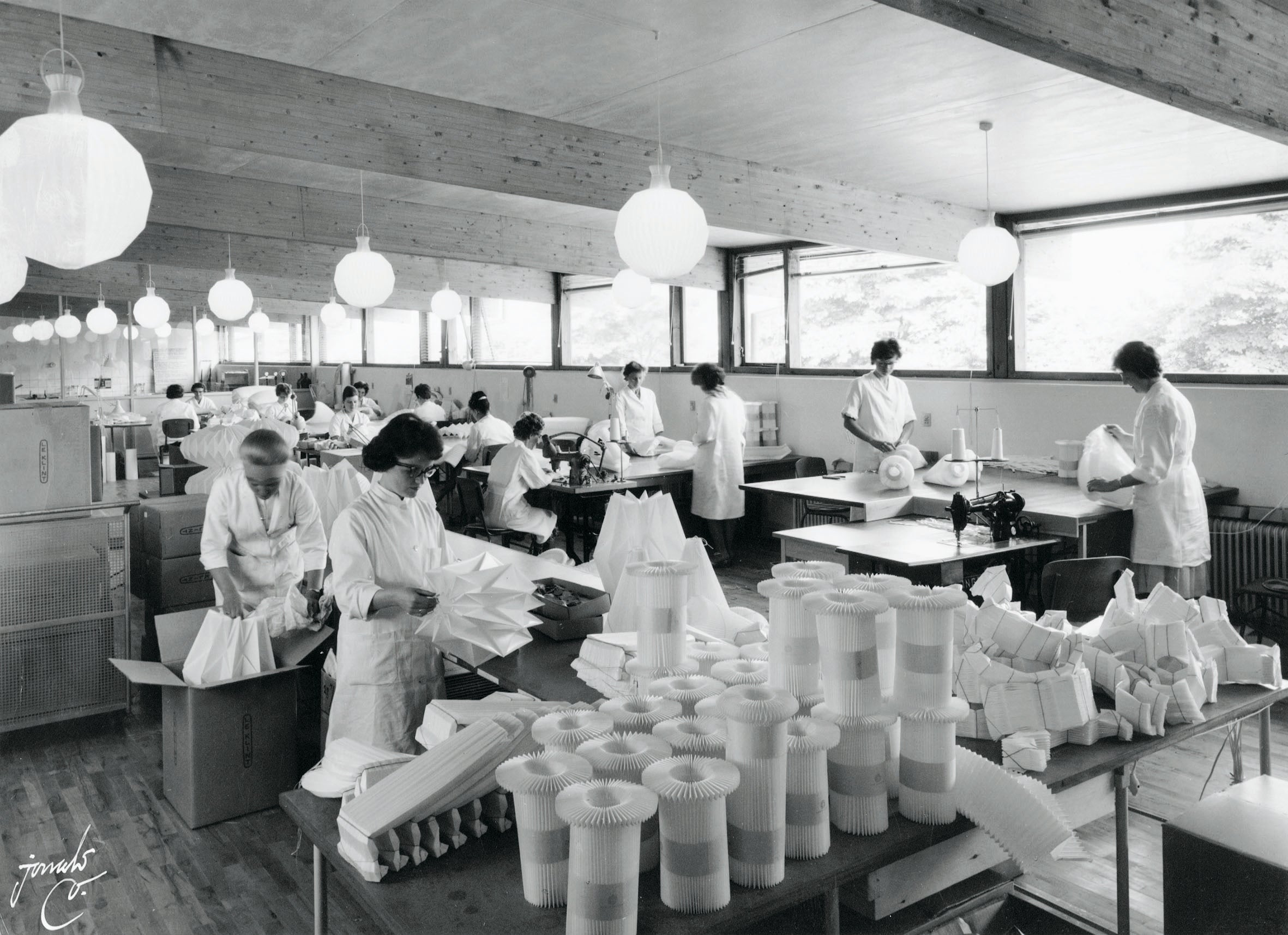
Made in Odense
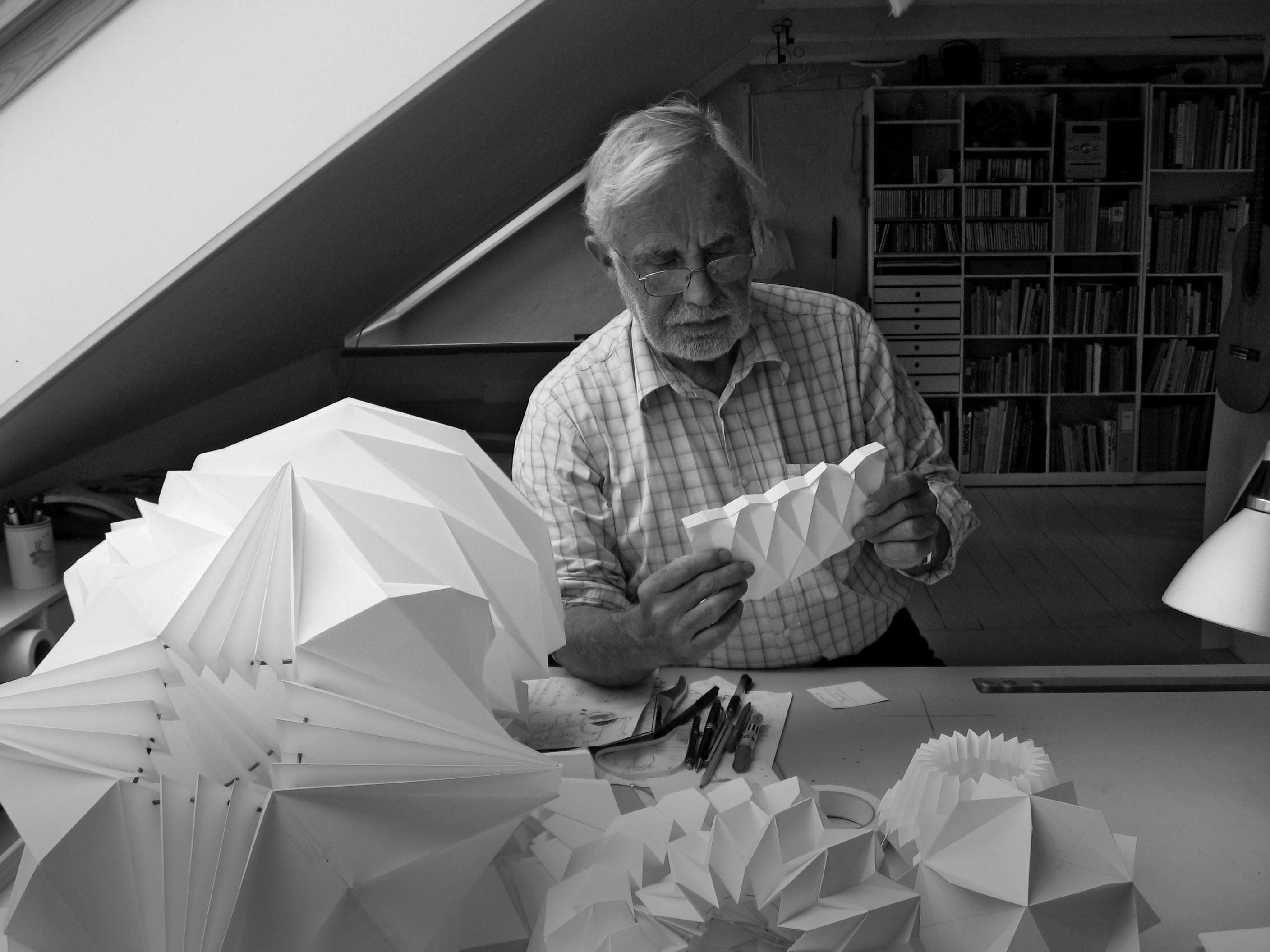
Model 153
Andreas Hansen created the Model 153 in 1964. The Model 153 set itself apart from previous Le Klint lamps with its many´facets and sharp zigzagging folds. The closed design and the many details at the bottom meant that the pendant could be hung in both high and low positions. The Model 153 remains one the hardest of Le Klints lamps to fold, as it requires an incredible precision.
New folds
In 1967, the 20-year old student, Poul Christiansen, would walk to and from the School of Architecture at the Academy of Fine Arts, a route that would regularly take him past the Le Klint shop in Copenhagen. Each time he looked in through the shop windows, he dreamt of being able to design a lamp that could hang next to those of the great names in architecture. He thus began to fold lamps in his free time, hoping to be able to present a new and different lamp to Le Klint. By folding in curves rather than in straight lines, Paul managed to achieve some incredible shapes, and once he was ready to present his ideas, he went into the shop and presented them to sales director Allan Bock. This was the start of a lifelong collaboration between Poul Christiansen and Le Klint.
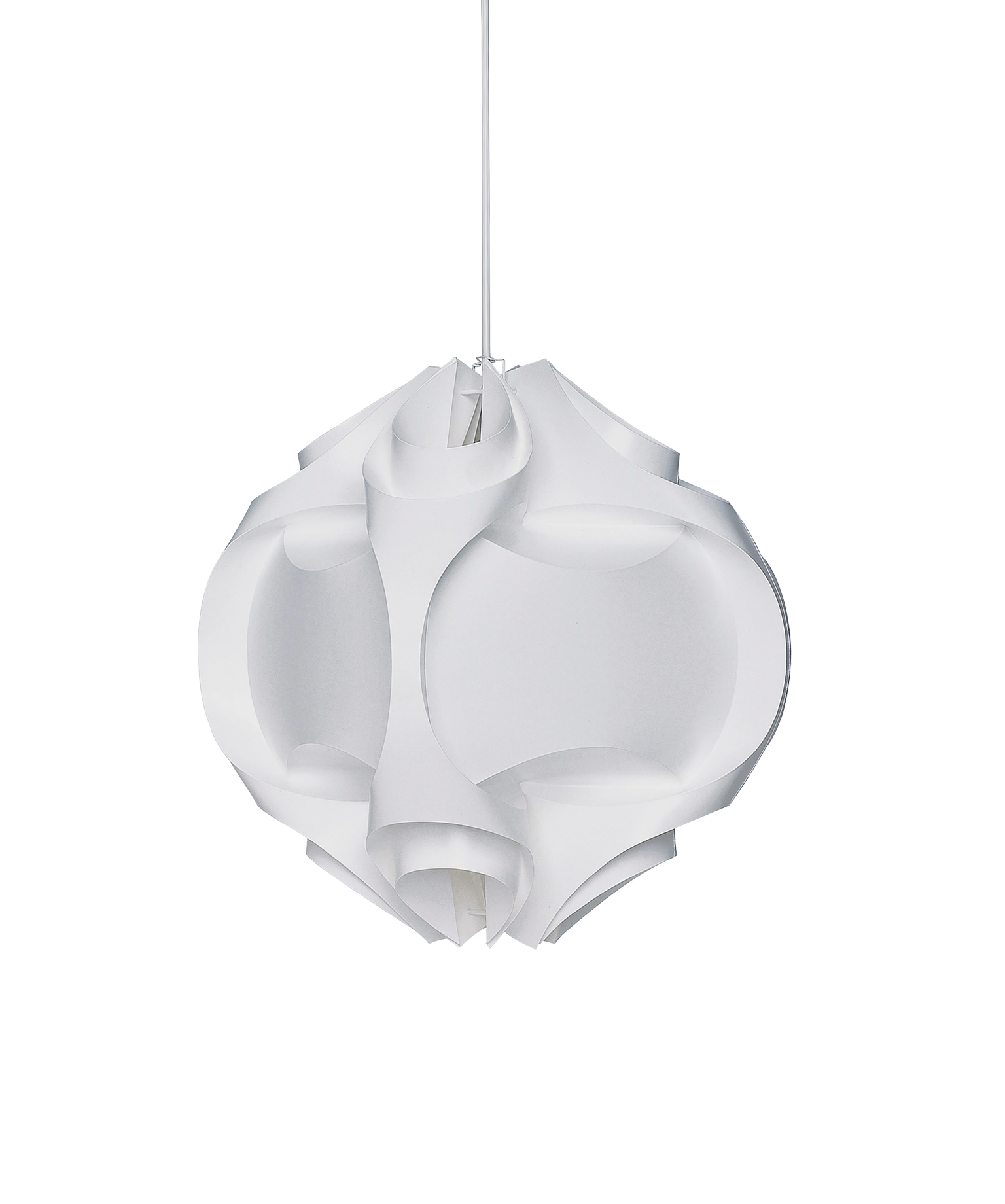
The 1970s
The KLINT Foundation
Securing the future
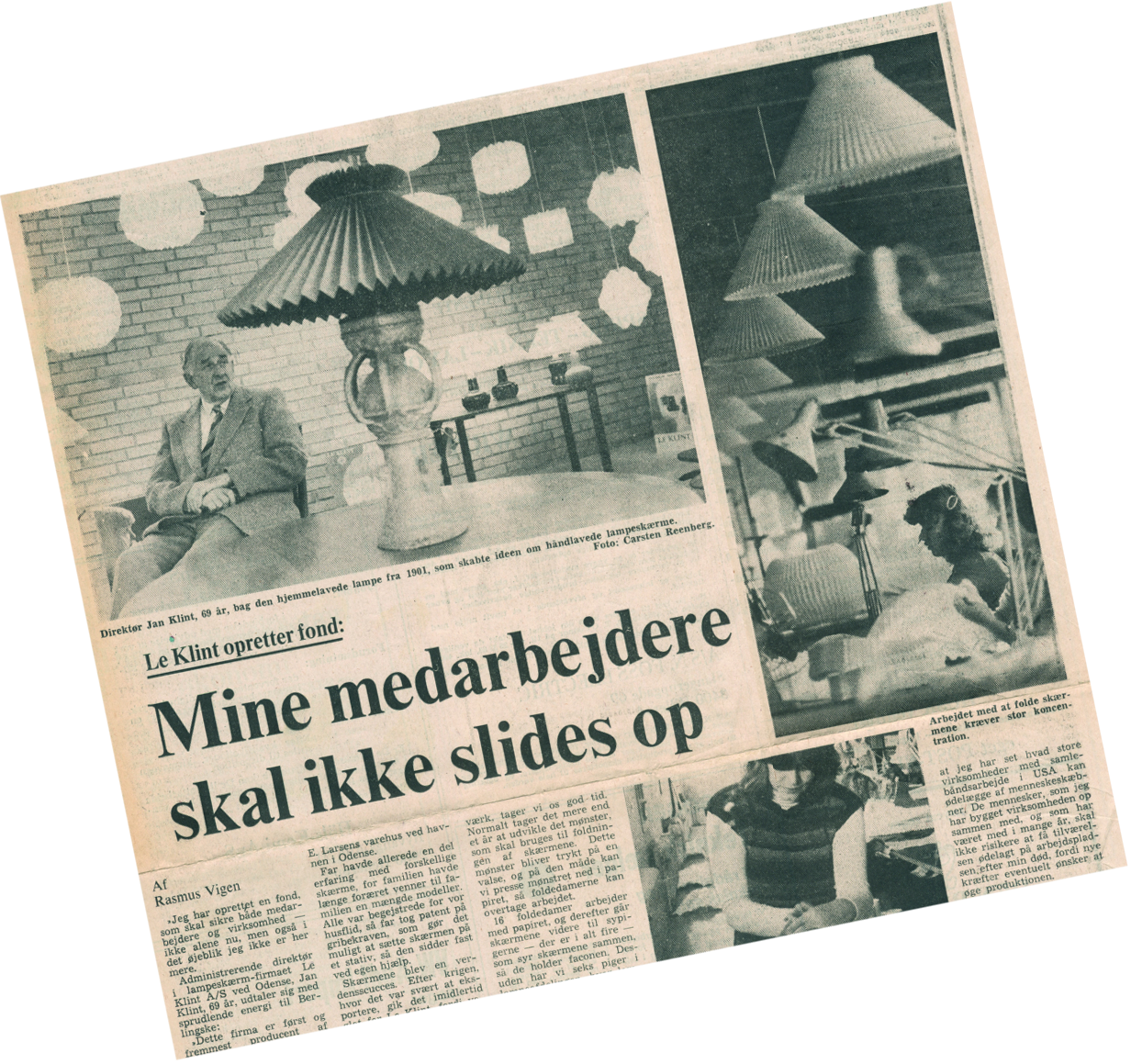
The KLINT Foundation is established
Director Jan Klint left many important milestones behind during his years at Le Klint. One of them was establishing the KLINT Foundation in 1972. Jan wanted to secure his family’s design heritage and ensure that the company continued to exist and that the staff would continue to have good working conditions once he was gone. The KLINT Foundation has since 1972 focused on preserving the good Danish craftsmanship with its own production based in Odense. The KLINT Foundation is the sole proprietor, and twice a year it provides grants to youths in education and also supports employees in difficult situation
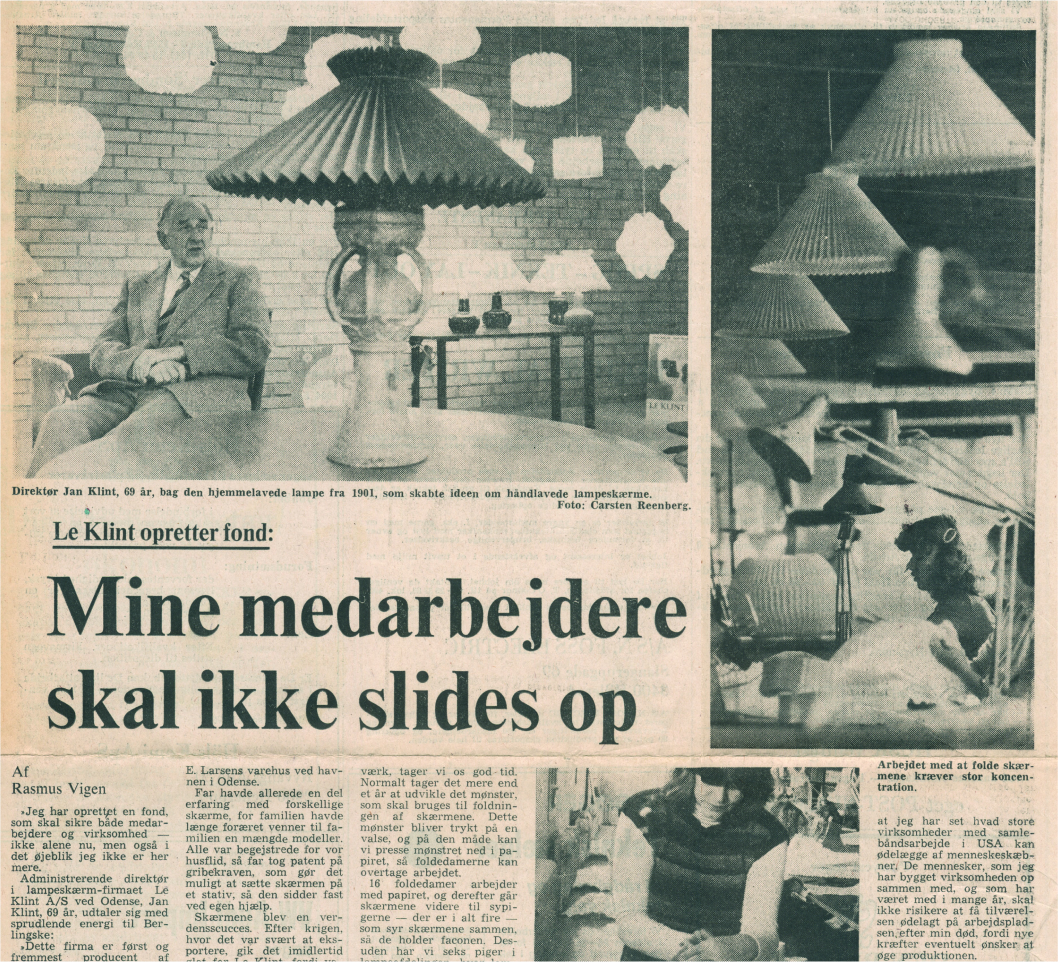
Model 172
In 1971, Poul Christiansen designed his absolute masterpiece based on mathematical sine line curves. The Model 172, also known as the Sinus Line, revolutionised the way lampshades were folded. With its innovative, organic design, the lamp helped achieve an international breakthrough and with the bold modern design strengthen Le Klints exports.
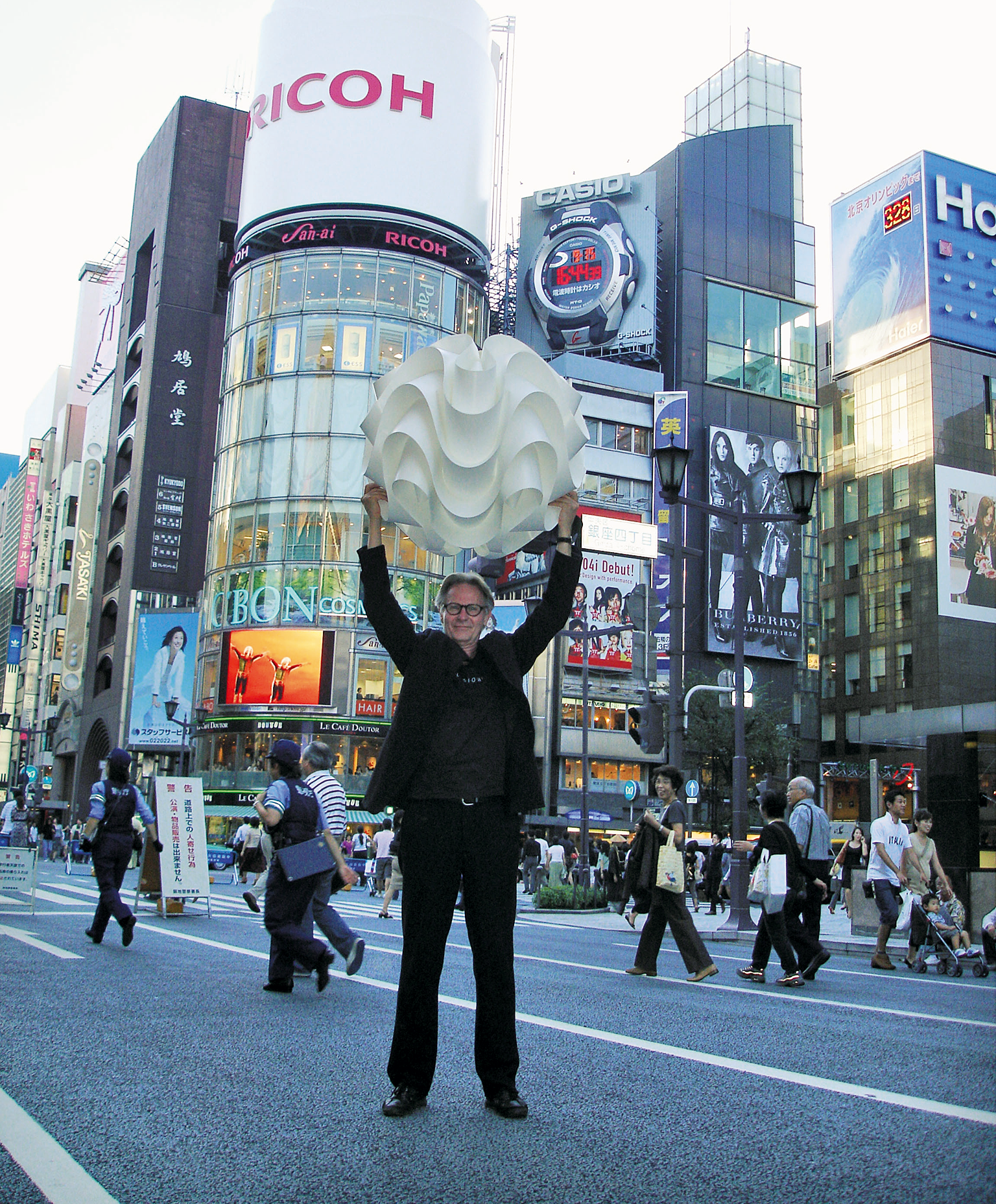
The 1980s
Her Majesty
A royal visit
The queen visits Egestubben
In May of 1980, Le Klint was notified that Her Majesty Queen Margrethe II wished to visit Le Klint in Odense. Since director Jan Klint was at that point on a business trip to the USA, he had to change his plans, and catch the next plane home in order to welcome the queen on the 9th of June. Le Klint has through the years supplied many lamps to the Royal court, which among other things have been used to decorate the Royal saloon carriage and the reception rooms at Copenhagen Airport. On the 16th of April 2003, Le Klint was appointed "Supplier to the Royal Danish Court".
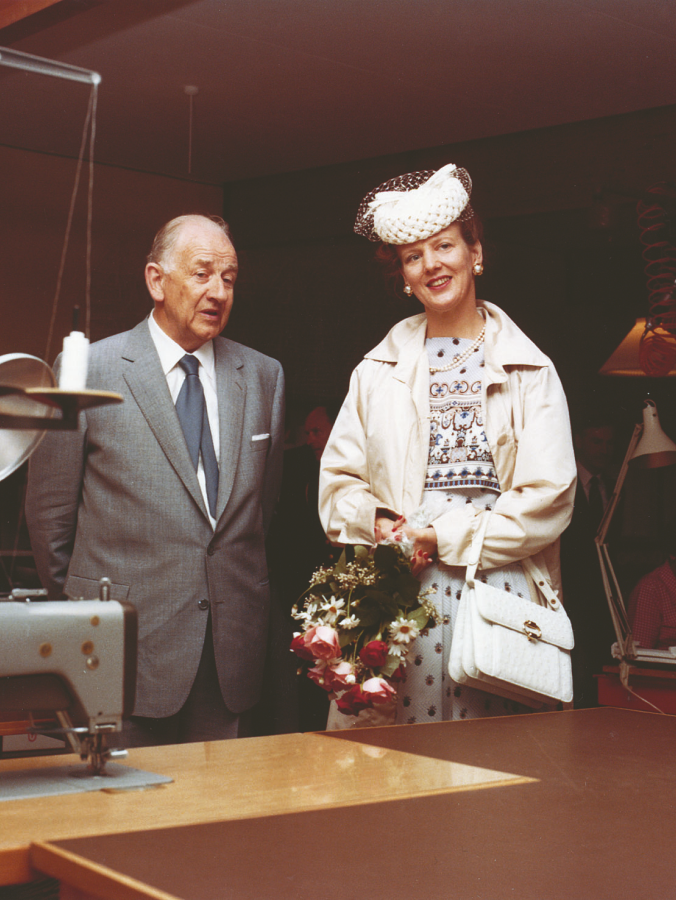

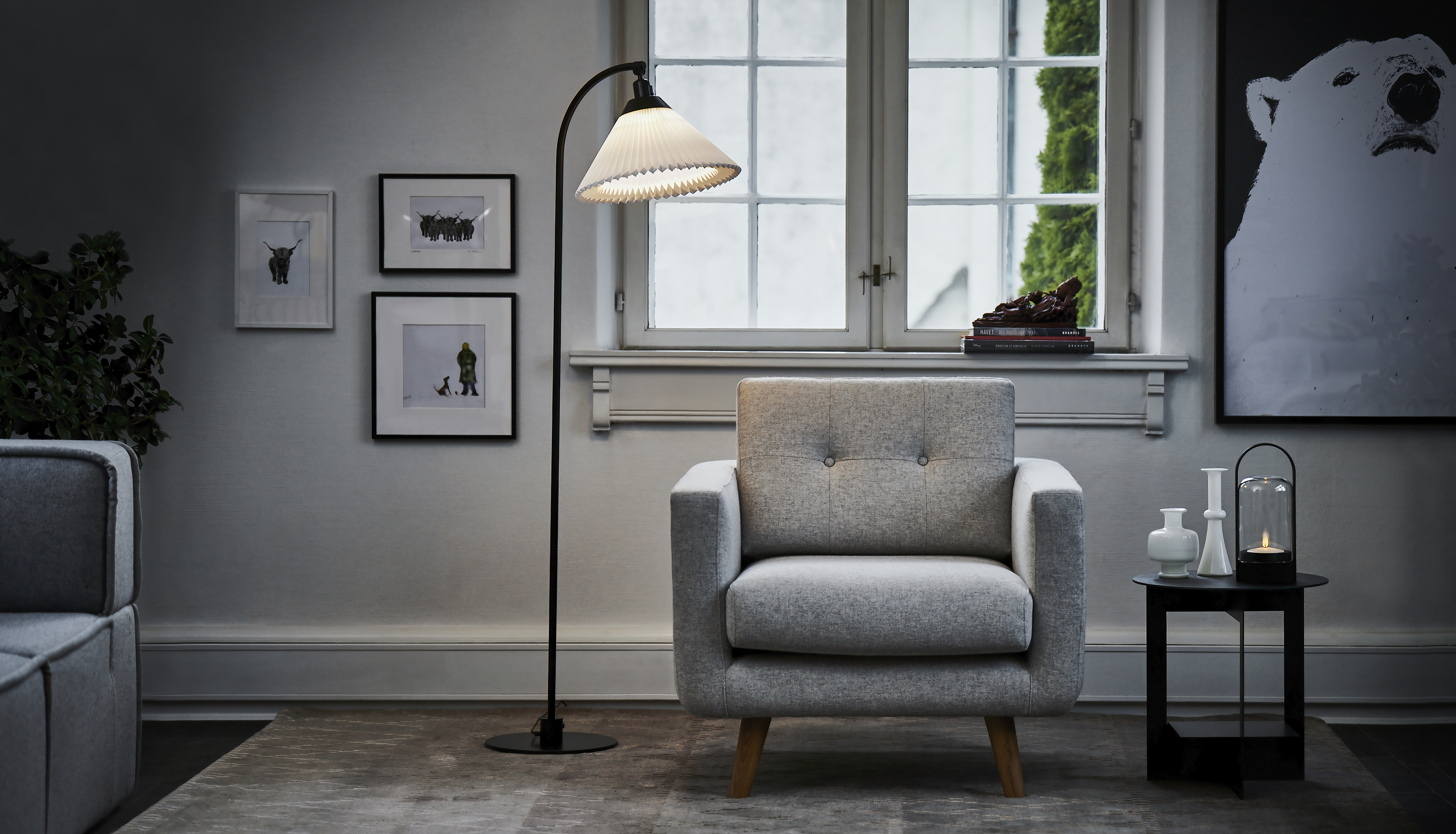
Model 368
The Model 368, also known as the Agger Lamp, was designed by Flemming Agger in 1979. Though it was launched in 1979, it was in the 80s that the classic lamp grew widely popular, becoming an iconic lamp in Scandinavian homes. The black metal base suited the pleated lampshade well and the Model 368 is still one of Le Klint bestselling floor lamps.
The 1990s
A new platform
Streamlining the craftsmanship
From production to director
In 1989, Jan Klint died, and for the first time in the company's history, a director was appointed from outside the Klint family. The new director was called Kurt Jørgensen, and he was already well-known throughout the company. At the time, he had been employed with Le Klint for a total of 35 years. Kurt started working in production when he was quite young and worked his way up thru the ranks, eventually taking on the role after Mr. Klint as CEO.
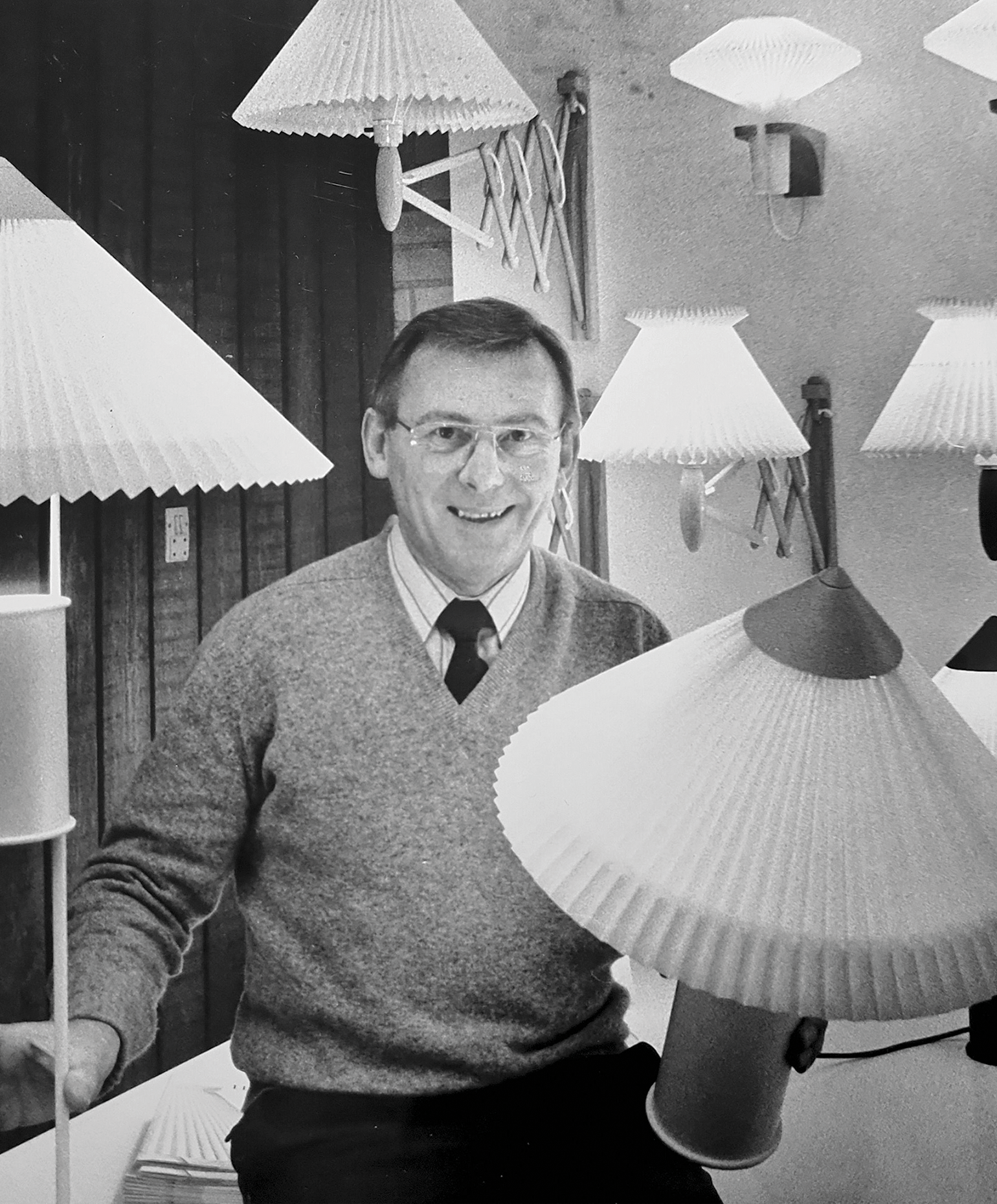
A time of change
One could in many ways say that it was this new director, Kurt Jørgensen, that caused the foundations to be laid in the 90s for the Le Klint we recognise today. Processes in the company were streamlined, and investments were made in marketing and in sales development.
The 90s brought a focus on developing new bases that had their origin in the Le Klint DNA and that fit the preexisting lampshades. This decade included many different design collaborations, such as Michael Bang, Christian Hvidt, and Philip Bro Ludvigsen.
In 1993, Le Klint celebrated its 50th anniversary with Kurt as its director
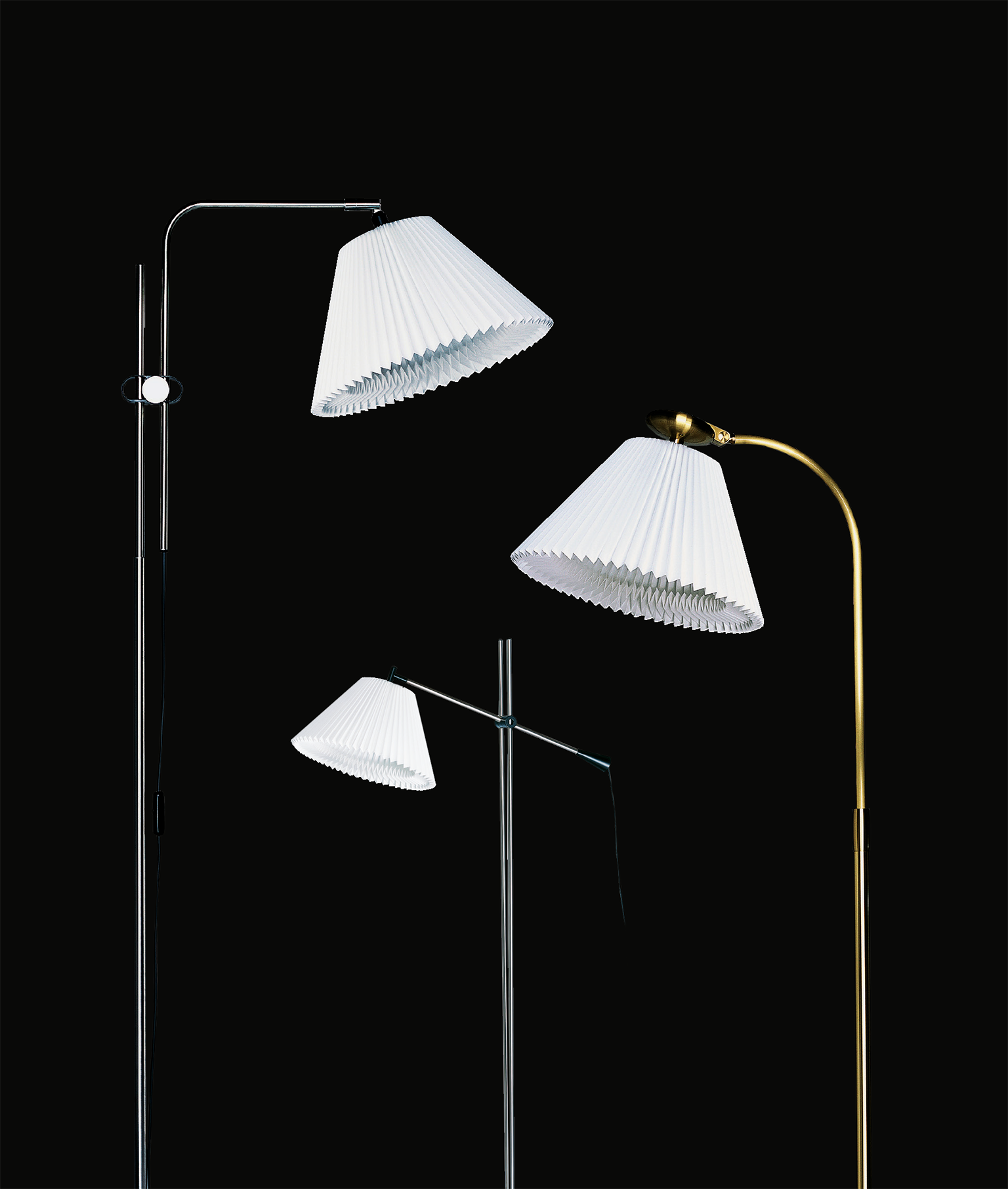
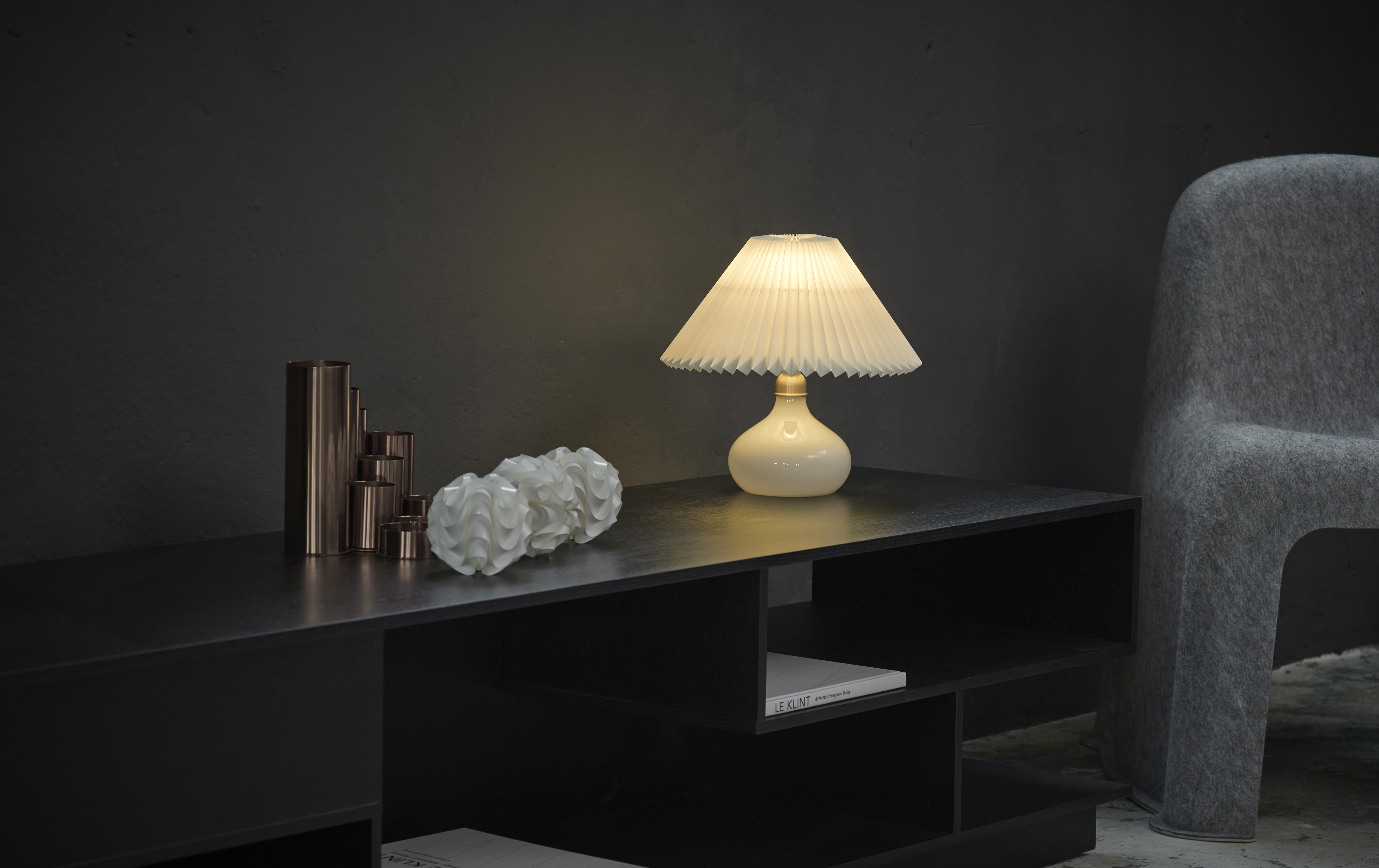
Model 314
The small table lamp was designed by Andreas Hansen in 1996. The table lamp was part of a larger series of lamps, and it was produced in hand blown glass. With its small size and simple and stylish design, the Model 314 was well suited for many different flat surfaces about the house, and particularly on the popular Montana shelving unit that became very popular in Danish homes during the 90s.
The 2000s
The modern Le Klint
A dramatic start
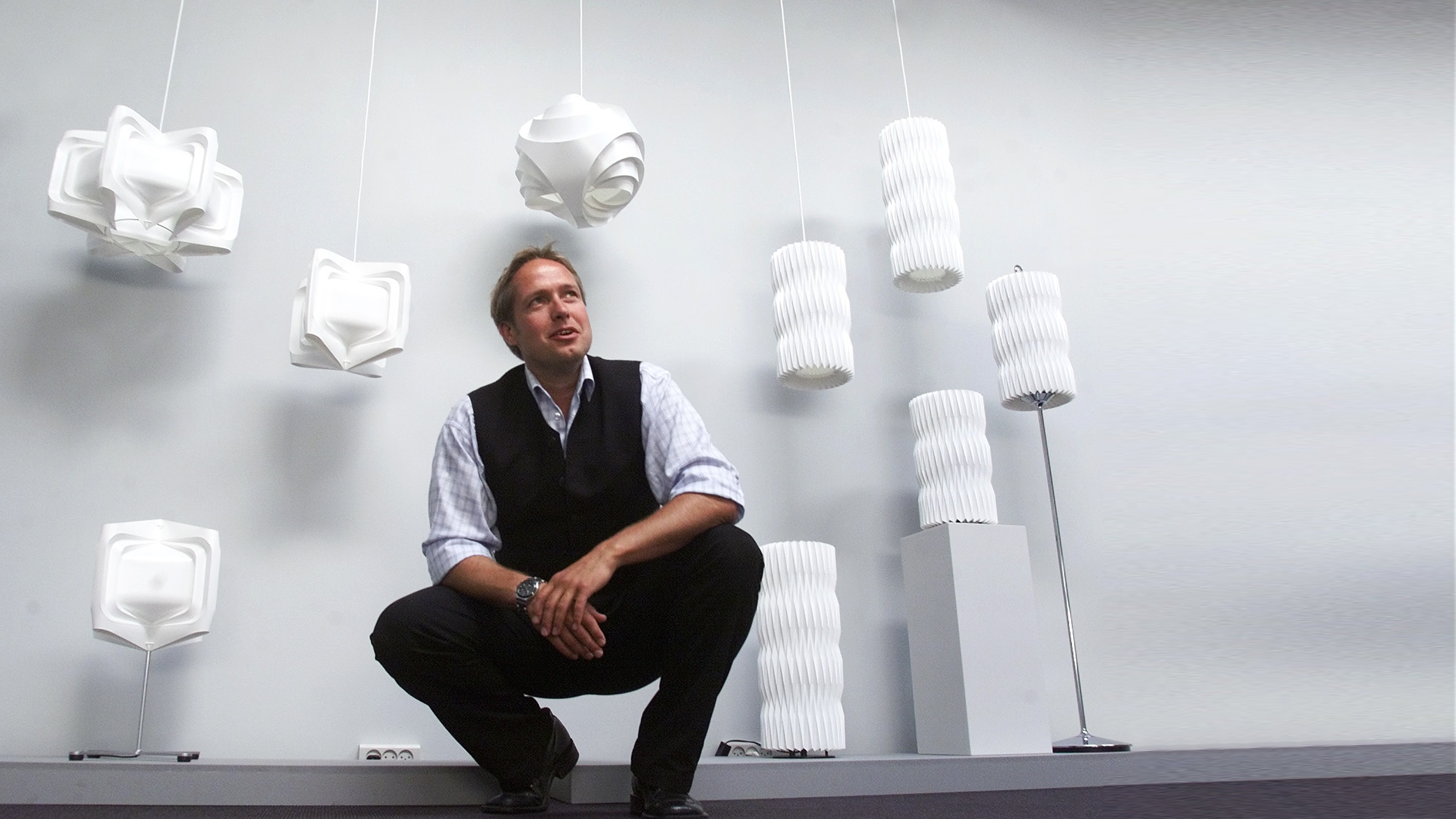
From the Norwegian Mountains to CEO
As a part of a planned generational change, Kim Weckstrøm Jensen was called home from Norway at the end of the 90s as the exports manager. The new century began dramatically with a fire at the company, and Le Klint had to be rebuilt from the outside and from within. This required new energy, and in 2001, Kim took over the position of director. Kim had a somewhat unusual background in the military and the outdoors industry. The new director modernised Le Klint, among other things by optimising the organisation as well as renewing the lamp collection to provide a greater influence to newer materials
The Bouquet
In 2007 at Aalborg University, the young student, Sinja Svarrer Damkjær, designed a modern chandelier as the final project of her MSc in Engineering. The lamp included references to a bouquet of flowers, of several cross-pleated lampshades, and the cords woven together into a decorative bundle, and hence the lamp was named The Bouquet. An updated version of the lamp series was relaunched in 2019, and today it a very popular lamp -available, with either one, three, five or even seven lampshades.
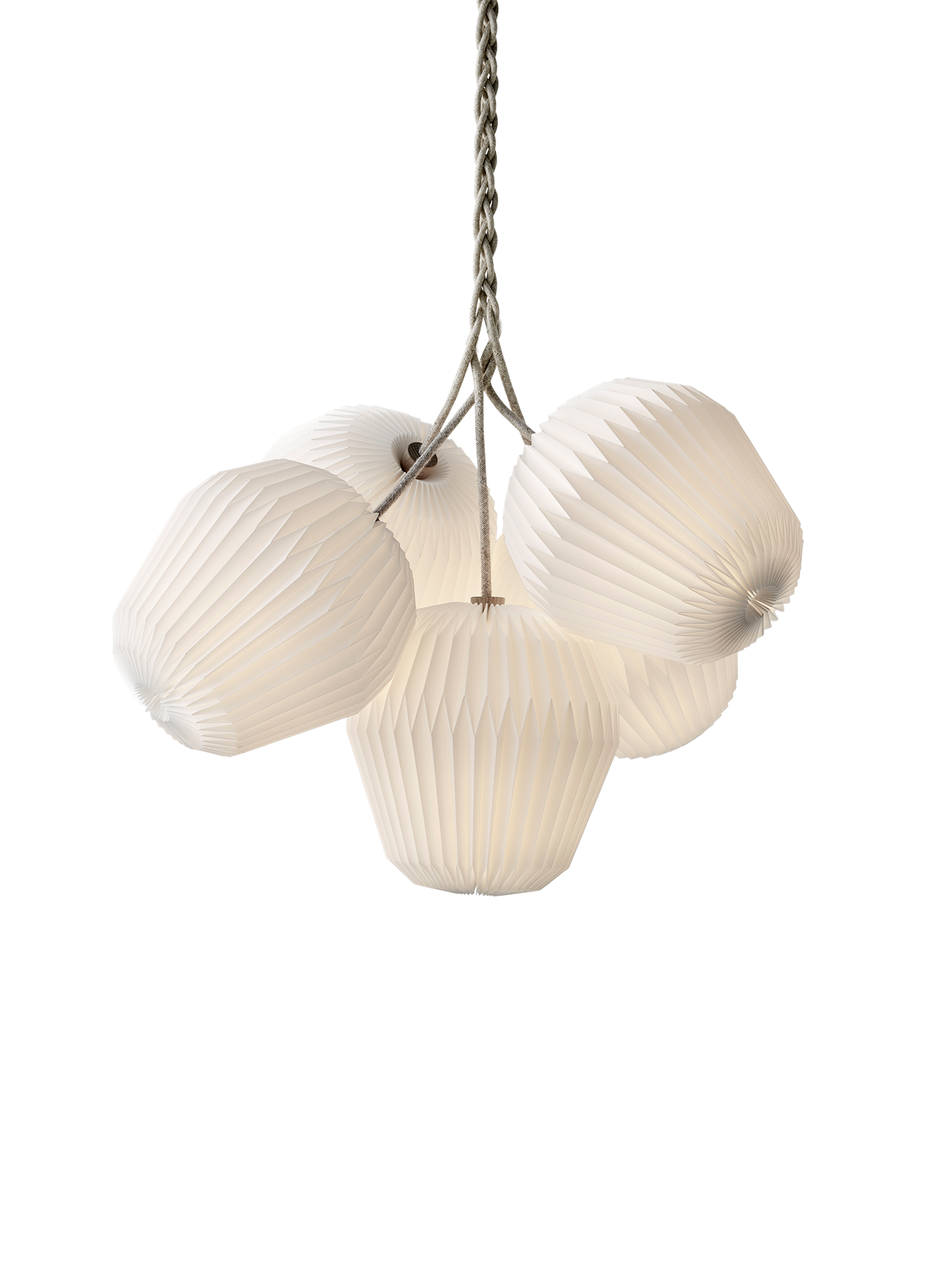
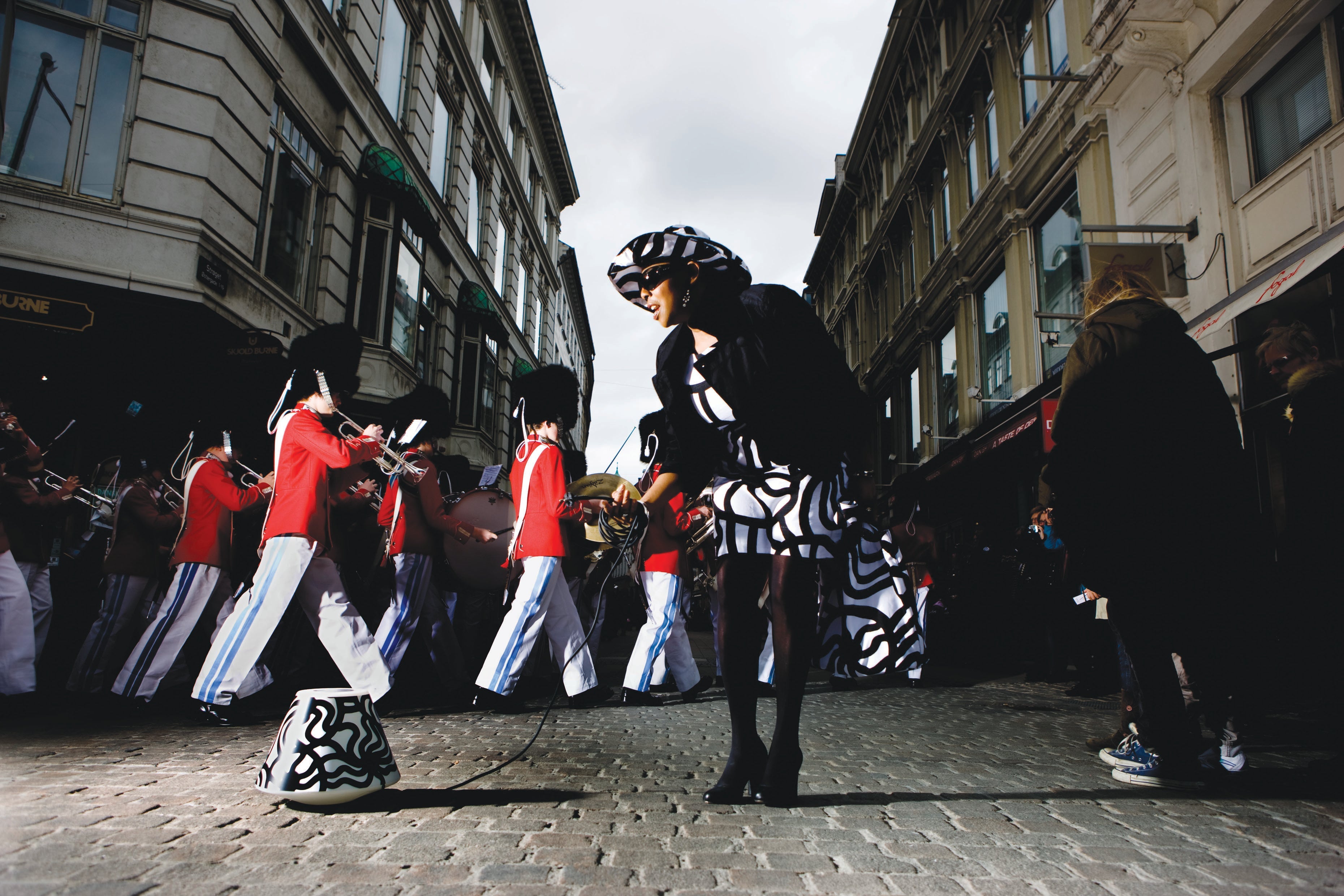
A changeable lamp
Le Klints great renewal and gamble at the opening of the century was the UnderCover lamp, which was designed by Philip Bro Ludvigsen. UnderCover was the first lamp from Le Klint that wasn't produced in paper or foil and that didn't need to be folded either. It was innovative in that it was based on the consumer's need for flexibility, as the inner lampshade could be switched, to change changing the entire appearance of the lamp. Le Klint collaborated with among others the Finnish Marimekko and their famous "Unikko" floral print for the innershades “that went UnderCover”.
2010s
Global design brand
Developing designs and markets
New design profiles
For Le Klint the 10s – and indeed the 00s – were decades characterised by many new collaborations with designers, who each provided their own interpretations of the Le Klint lamp. Collaborations had previously been limited to recognised Danish architects, but this changed, bringing a greater focus on young talent in the area of design as well as several foreign designers, representing a greater diversity from different parts of the world. The new designs included ones such as Swirl by Øivind Slaatto in 2013, Caché by Aurélien Barbry in 2014 and Lamella by Jonah Takagi and Hallgeir Holmsted in 2017.
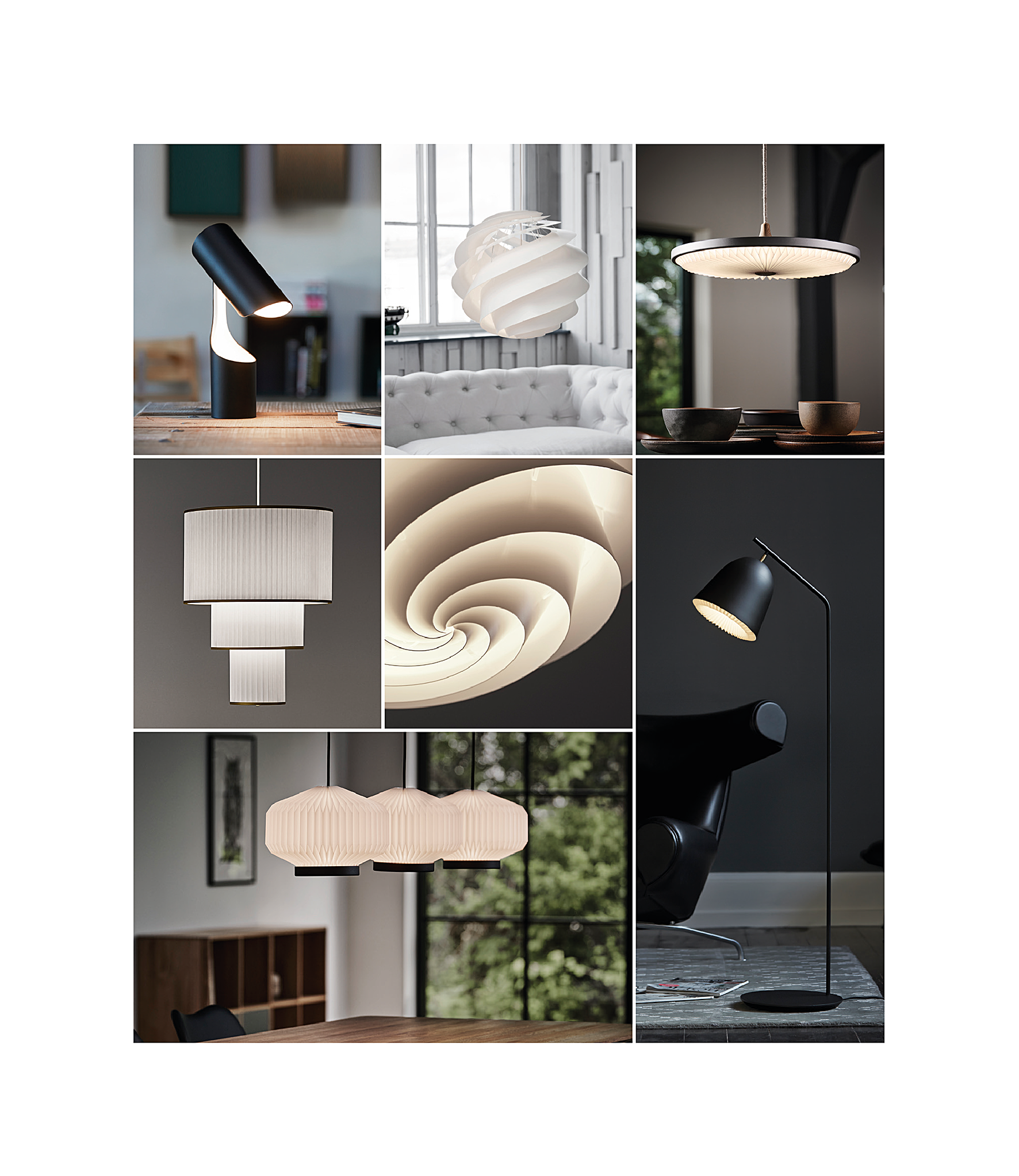
Carronade
The Carronade series was launched in 2016 and was designed by the Swedish designer Markus Johansson. It differs from the classic folded lampshades in that it is made out of aluminium and wood, with details in either brass or aluminium. With Carronade, Le Klint expanded its collection with regards to the materials used.
Other than being popular in private homes, the Carronade is also used in a lot of projects in both hotels and restaurants, as it is available in many versions and can be ordered in several different colours.
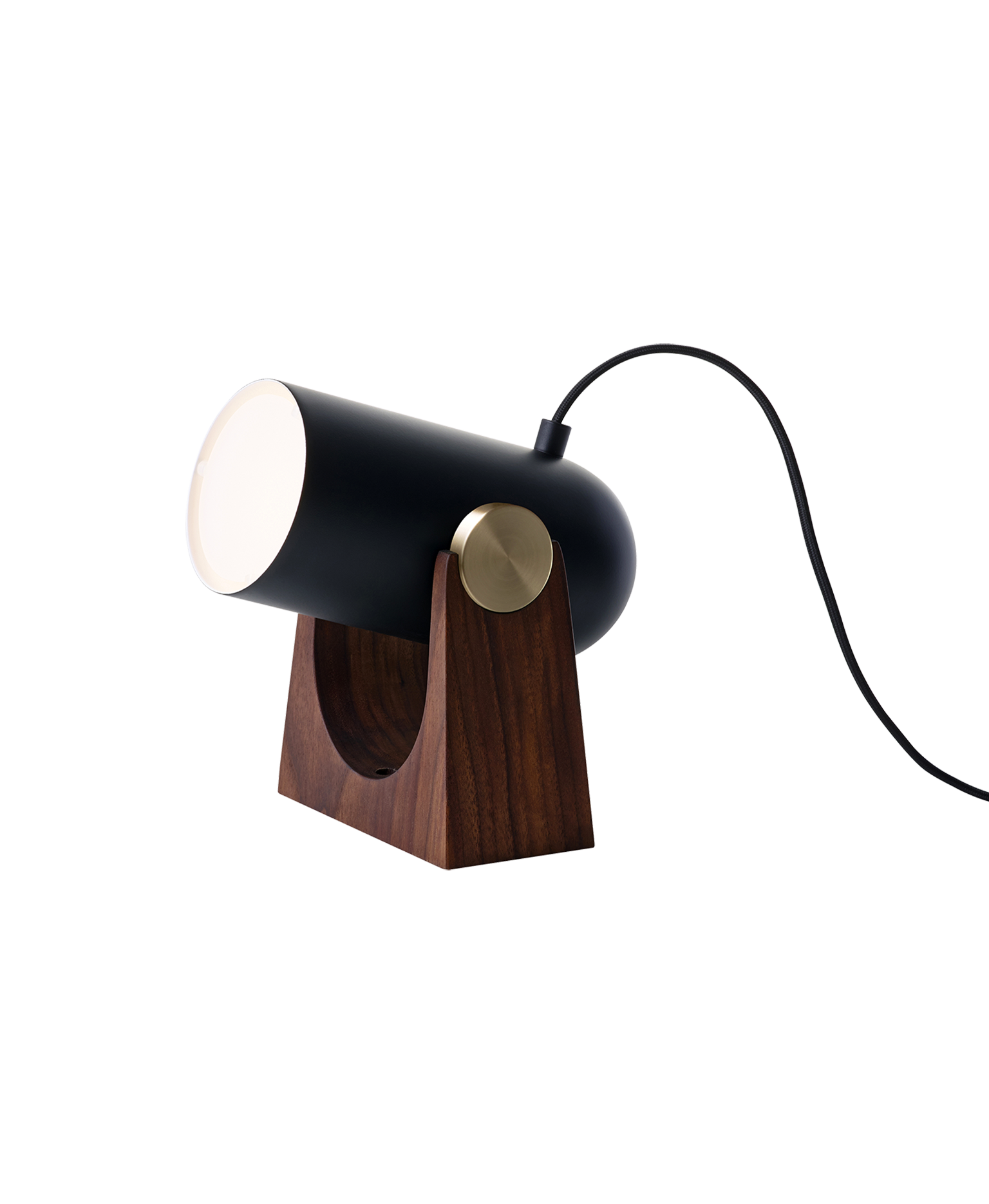
The Giga Le Klint lamp
In 2017 a new culture and concert hall in Odense, the Odeon, opened its doors for the first time. Le Klint was given the task of providing a lamp for the venue's great foyer. The result was a gigantic version of the Swirl lamp, designed by Øivind Slaatto and produced in Odense. Fully two meters in diameter, the lamp was so large that it needed to be assembled by hand in the Odeon's foyer. A full-grown human could fit and move around inside the gigantic Swirl lamp.
In 2018, the following year, Le Klint celebrated its 75th anniversary.
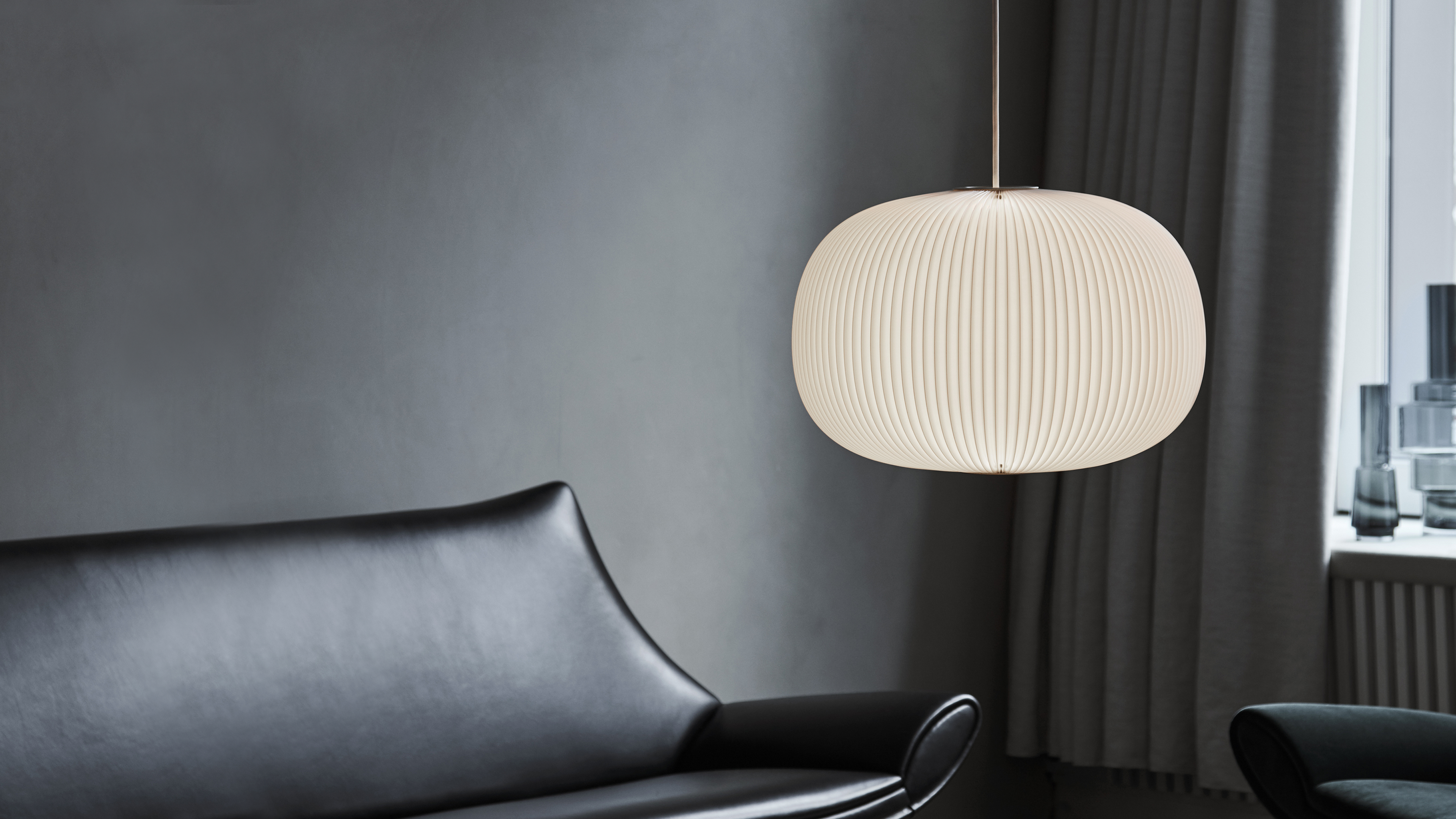
Lamella
2017 saw the launch of the Lamella series, designed by the Norwegian designer Hallgeir Homstvedt and the Japanese/American designer Jonah Takagi. Lamella was the first collaboration this designer duo had with a European brand, and it quickly became one of Le Klints more popular lamps. The lamp is inspired by the fine arching curves on the underside of a mushroom or fungus, also known as lamellae. The series is produced via the PLICA technique, an old production technique that Le Klint has managed to recreate.
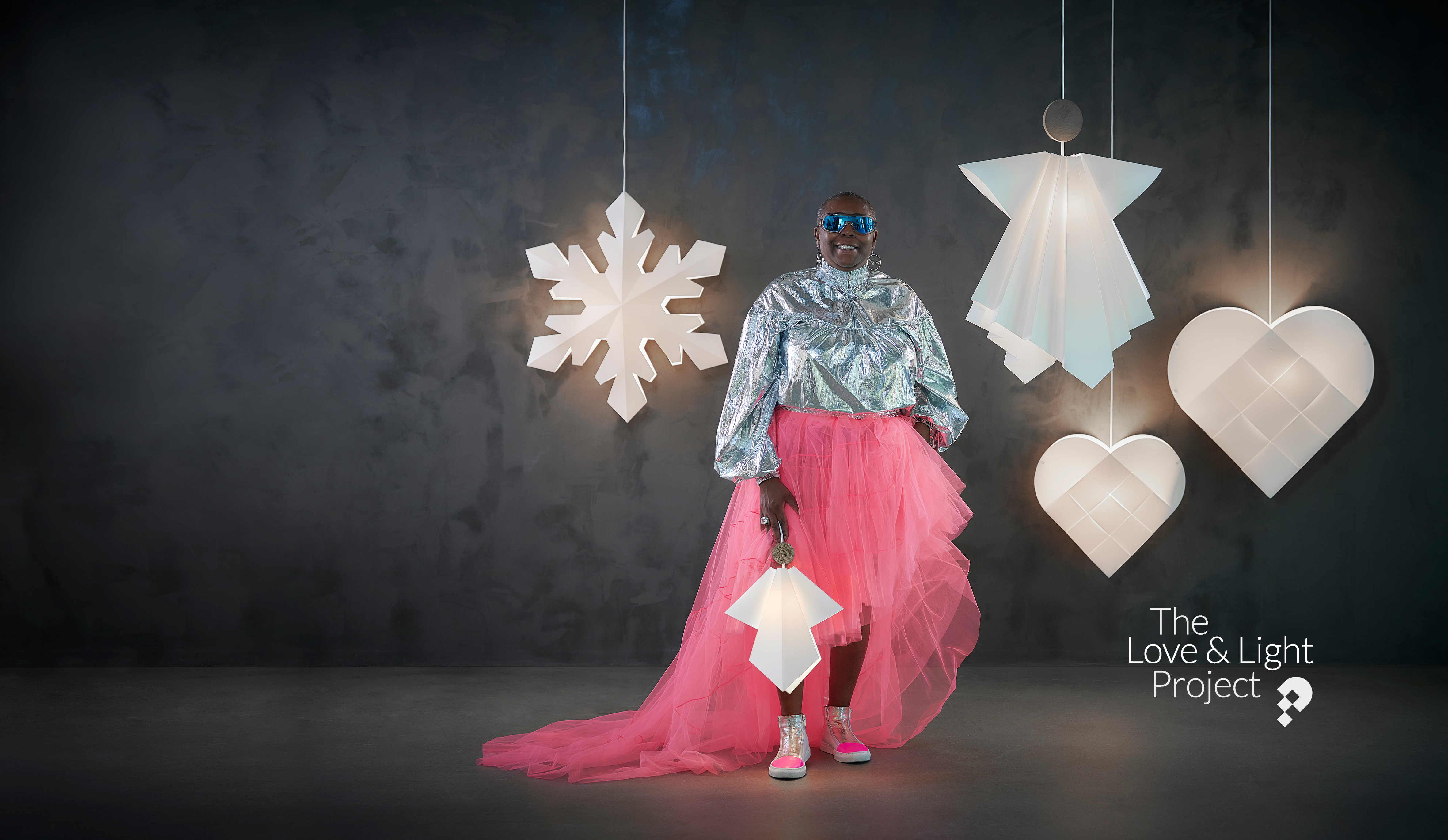
The Love & Light Project
When the Englishwoman Isa Dawn Whyte Jensen moved to Denmark and experienced her first Danish Christmas, she immediately fell in love with the traditions. Since she worked with lighting as part of her day job as a Brand Manager at Le Klint, she had the idea of adding lights to the folded heart. This was the start of a collection, the profits from which go to charity to this very day. The Love & Light Project helps people or organisations with limited means that give back to their communities in their own way.
2020s
The story continues
Made in Odense
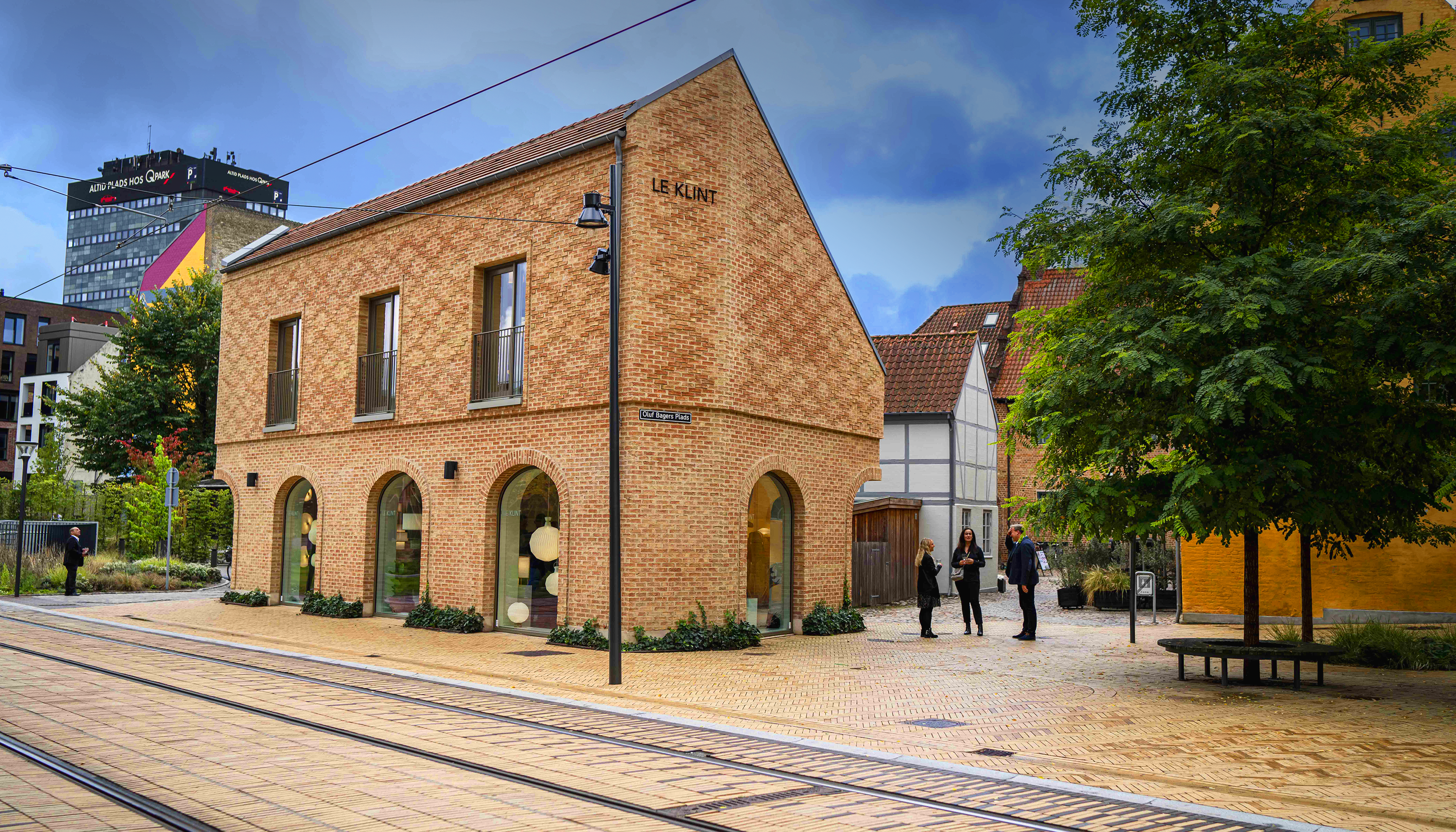
A shop in Odense
After almost 80 years, Le Klint opened its second shop at Oluf Bagers Plads in Odense in 2022. The shop is centrally located between the towns historic neighbourhoods and a new up-and-coming district. Similarly to Le Klint, the architecture of the building references the past, but focusses on the present and future when it comes to making
sustainable choices of materials.
Le Klint furthermore strengthened its collaborations with chosen partners from all over Denmark, allowing customers to enjoy a more passionate service experience as well as see Le Klints craftsmanship up close.
80th anniversary
Le Klint celebrated its 80th anniversary in 2023. In connection with this, a number of new designs were presented as part of Copenhagen's design festival – 3daysofdesign.
One of the greatest new products was the Le Klint 80 – Model 328, which was designed by the Frenchman Aurélien Barbry, who had also designed lamps for Le Klint in the past. The Model 328 is based on the classic Le Klint lamp with a pleated lampshade, but also has a powerful contemporary look and is made of oak with brass details.
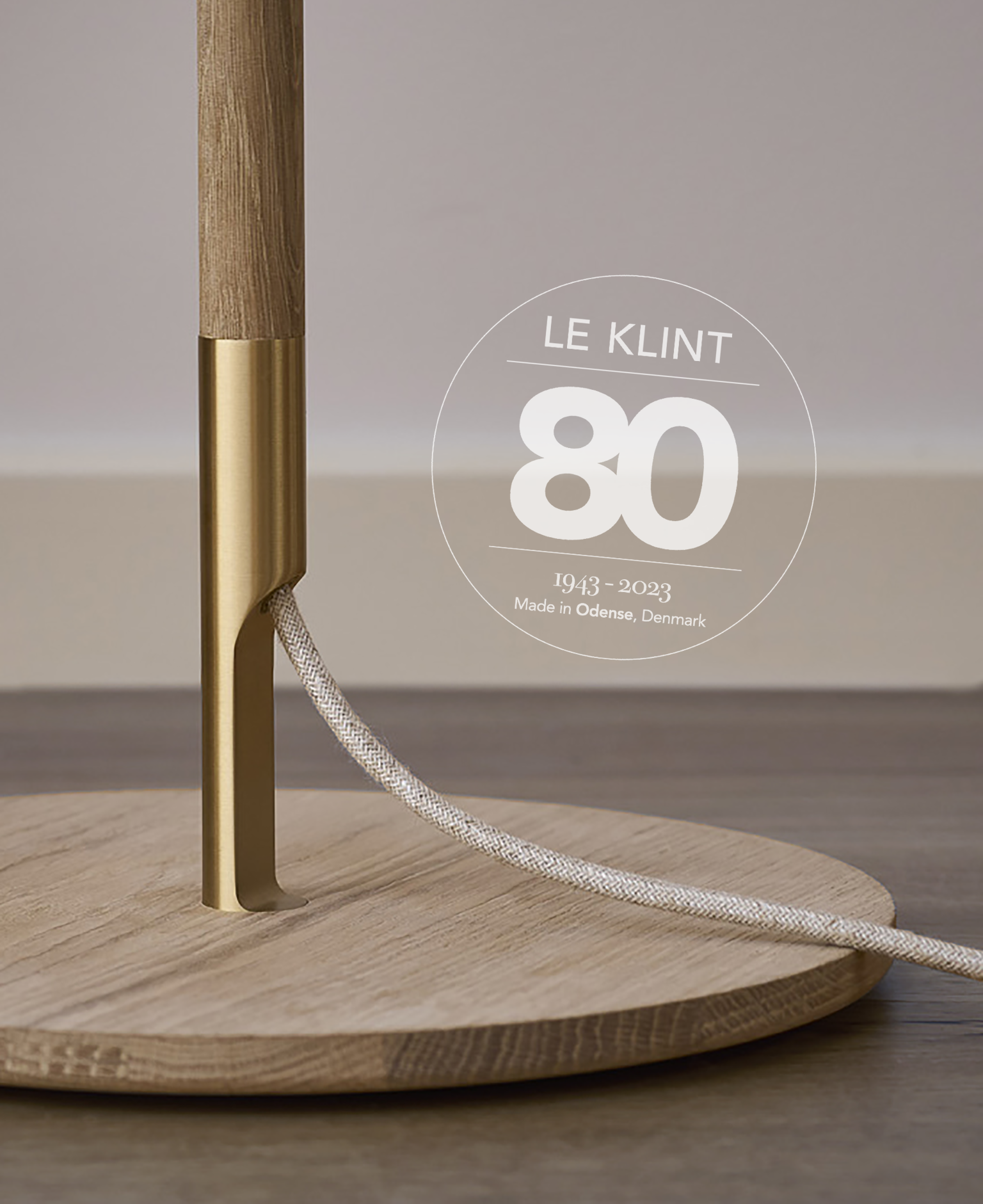
Past, present and future
Le Klint makes a concious effort not to follow the short-term fads of the time, but aims to follow trends that are both timeless in function, material, colour and form. People often tell us that our classic lamps still look modern. A Le Klint lamp can light up a home for many decades and be passed on to the next generation, who will still consider it beautiful.
We are proud to have kept our production in Odense, the place where it all began in 1943. The craftsmanship is very important to us, and we are thus firm in our decision that Le Klint should remain a "Made in Odense" company. With our solid roots to past, we constantly seek to develop our brand to meet the future.
